Best external hard drive for Mac 2025: Augment your MacBook or iMac
Find the best external HDDs and SSDs for iMac and MacBook laptops
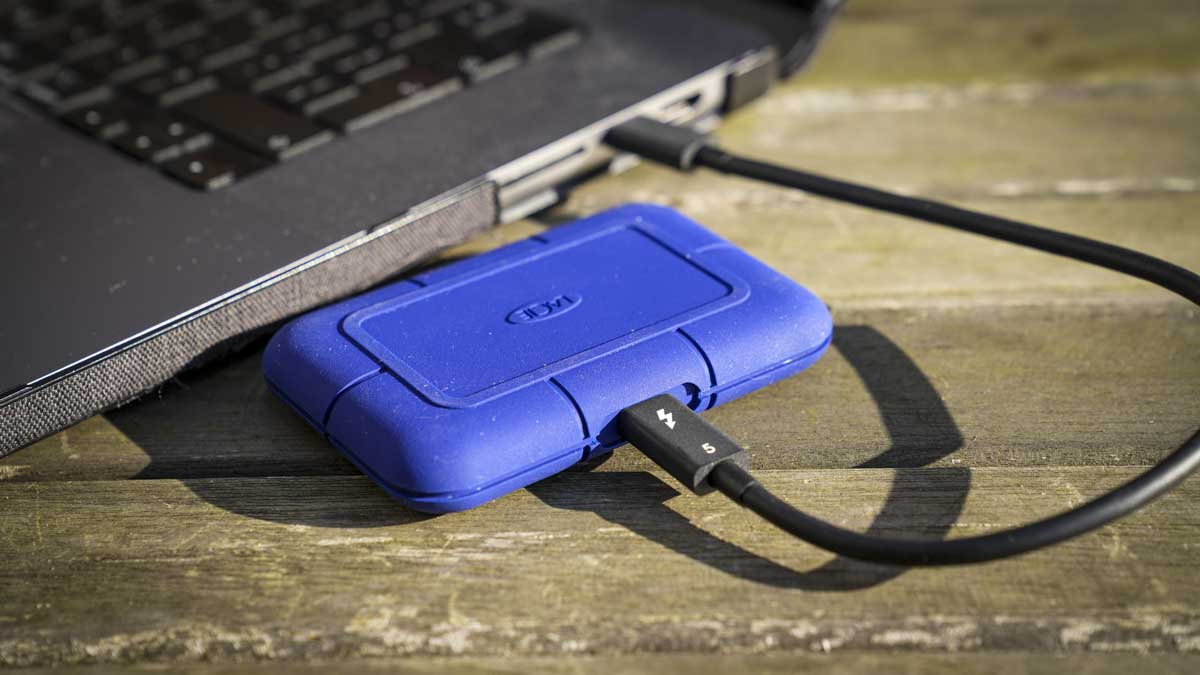
If you own a MacBook or an iMac, you'll want to pair it with one of the best hard drives for Mac. Apple hardware doesn't always come with the most expansive internal SSD, which is why it's worth exploring a device that can help you upgrade the amount of storage space you have to play with.
Topping the list for most people is the SanDisk Professional G-Drive - alongside 4TB storage, this HDD boasts fast read/write speeds, a portable design, and an IP67 rating, making it one of the best rugged devices we've tested on macOS. Read our full review below, alongside my recommended alternatives for all budgets and uses.
My team and I have years of experience reviewing all the best external hard drives and the best portable SSDs, alongside the best MacBook Pro accessories. Like most hard drives and SSDs, the best often depend on your own needs. If you're looking for something to hold data for back-up or storage purposes, it might be worth investing in a larger HDD – but on the flip side, if you need to transfer massive files on a regular basis, a lightning-fast SSD is best. We've benchmarked the best external hard drives for Mac through a series of extensive tests, and we've recommended a few of our favorites below.
Best external hard drive for Mac overall
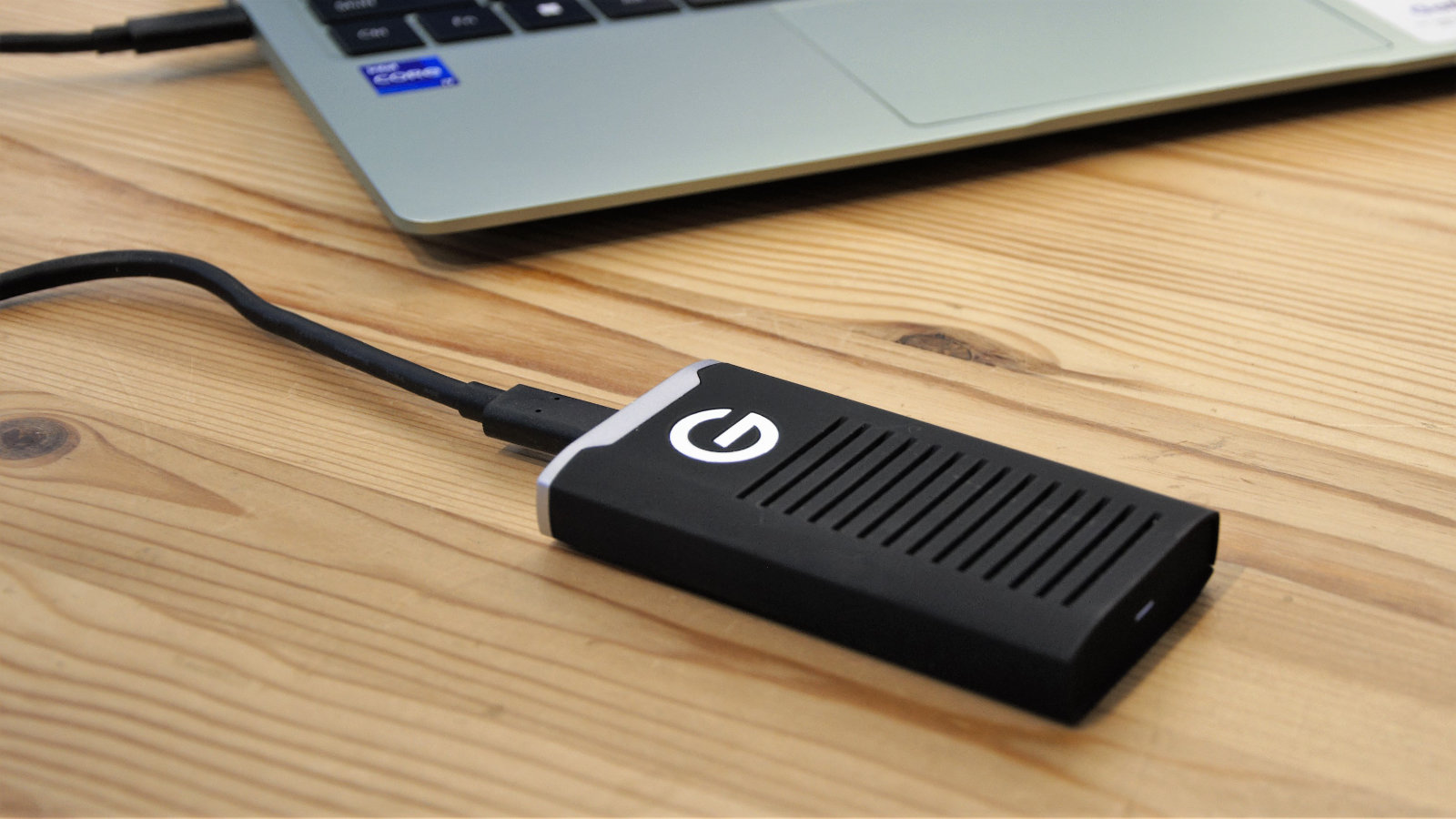
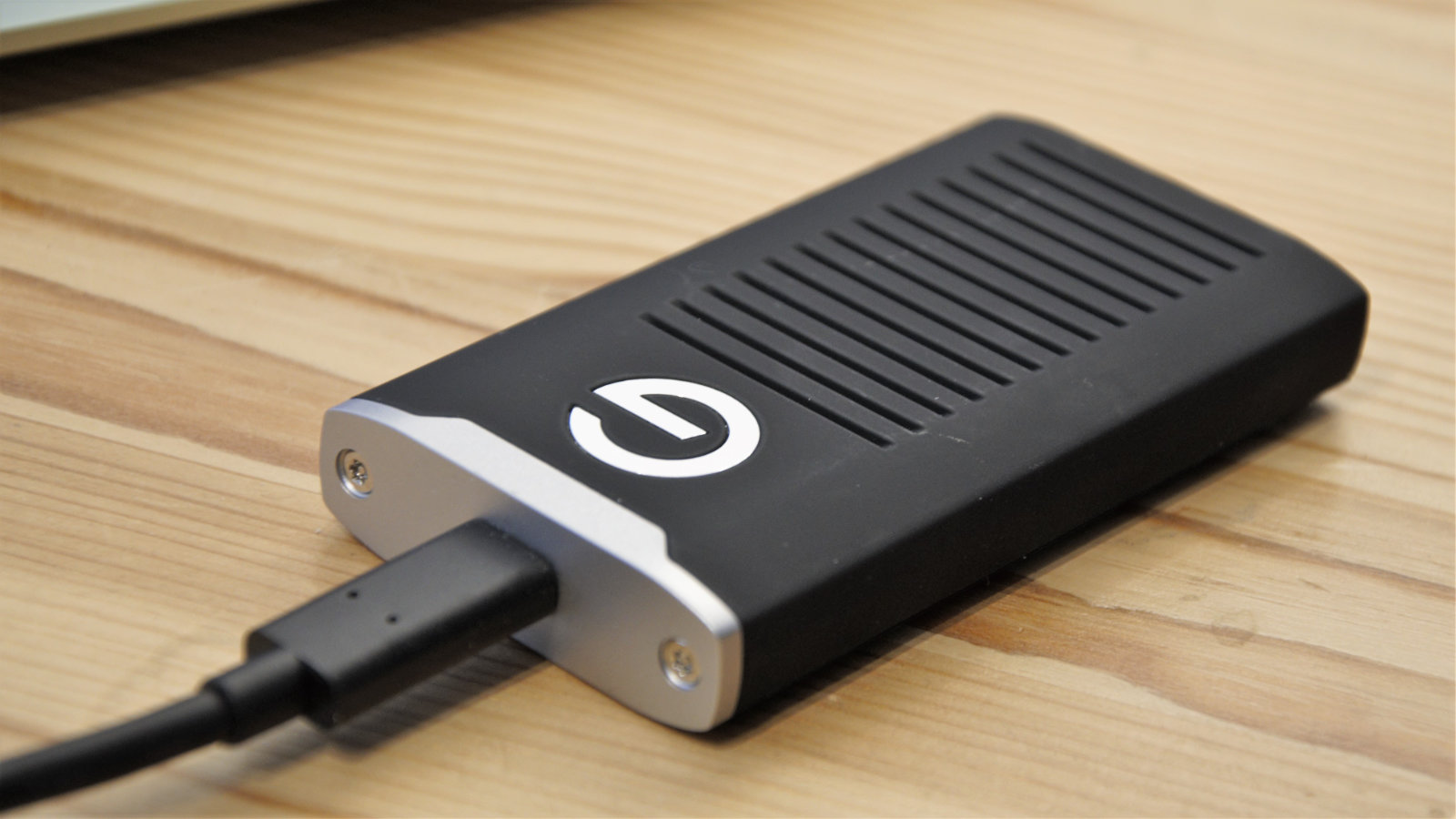
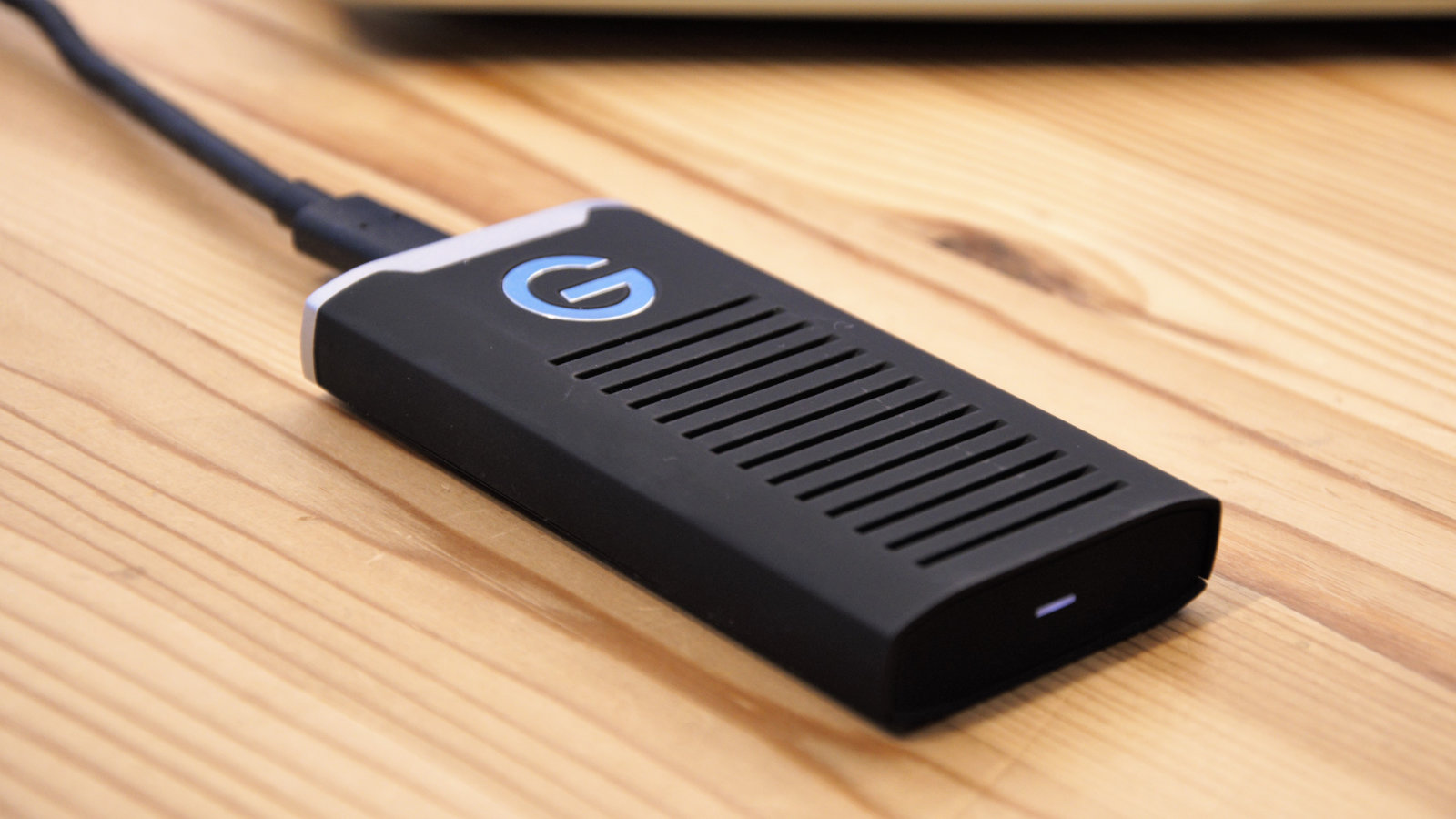
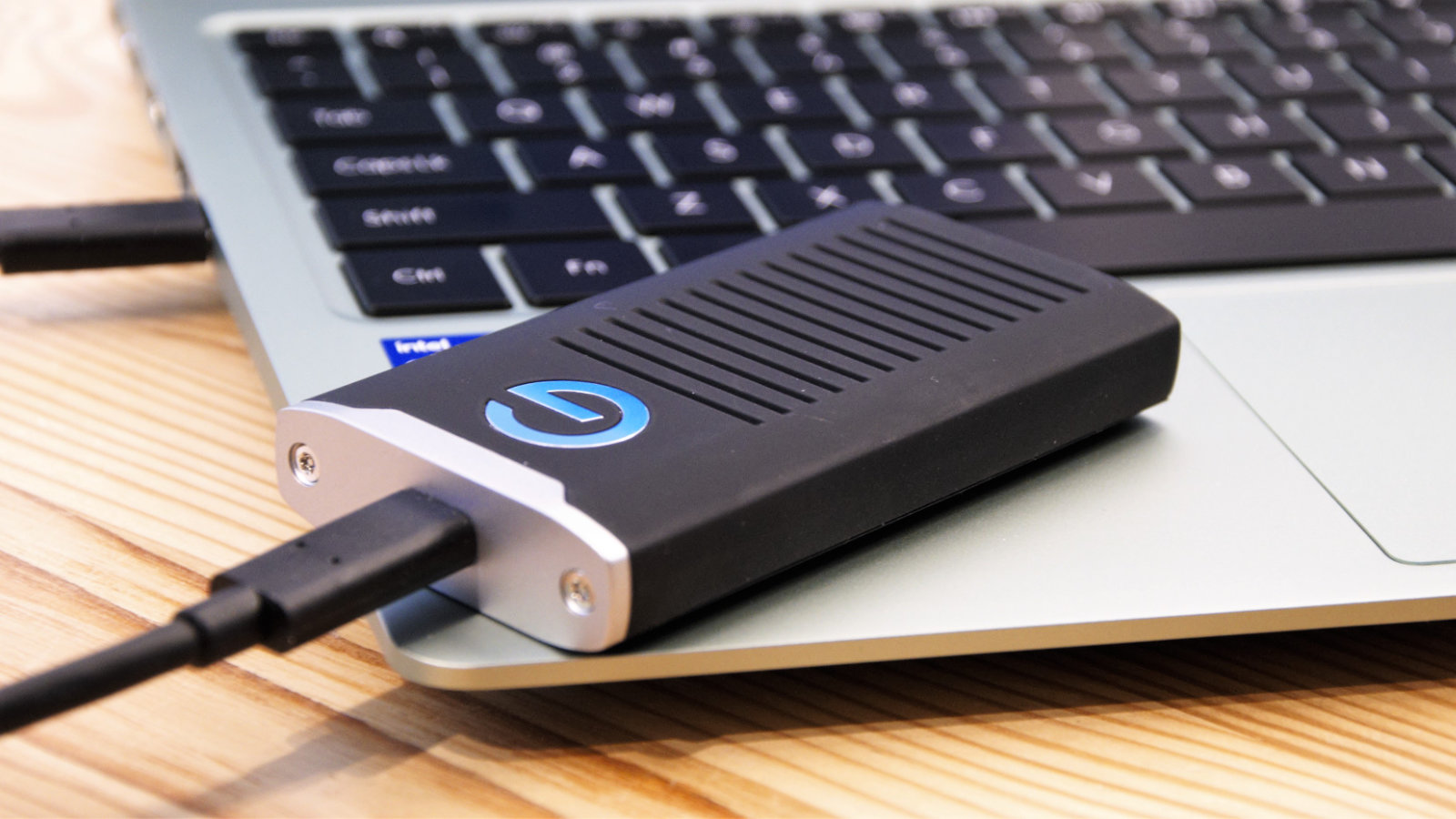
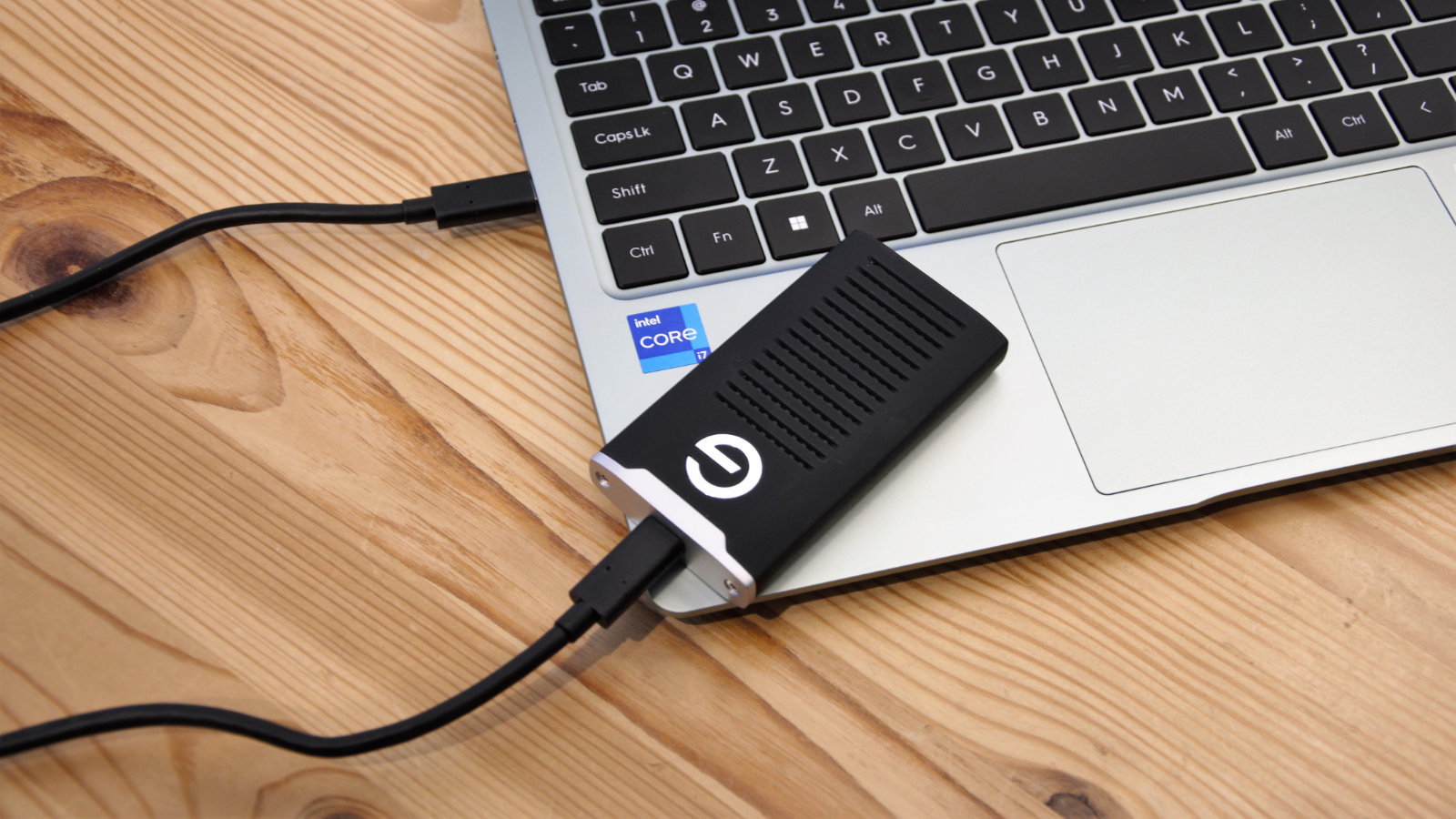
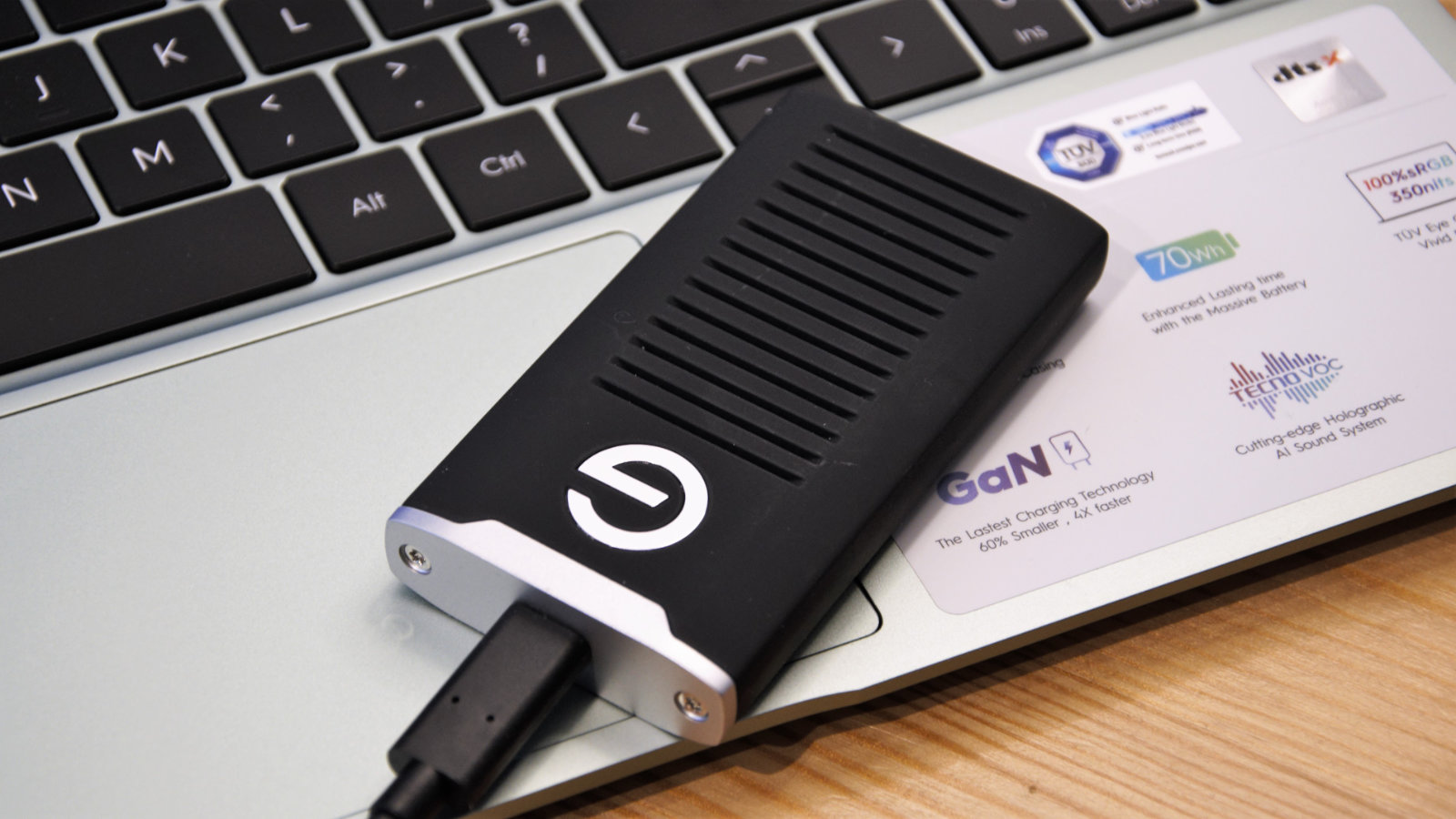
Specifications
Reasons to buy
Reasons to avoid
This rugged, external hard drive comes pre-formatted for Mac and offers IP67 water and dust resistance. According to the manufacturer Western Digital, it also offers an up to 3-meter drop protection and crush resistance of up to 2000lb/900kg.
This G-Drive is exclusively USB 3.2, and the best port for it is one with USB 3.2 Gen 2 level bandwidth. It offers a useful level of durability and water and dust resistance. It also has the capability for 256-bit AES-XTS hardware encryption, enabling the contents of the drive to be secured effectively. Although, the owner must provide encryption tools to lock and subsequently unlock the contents stored on the drive, if they want to use this functionality.
In our tests with this device over the years, we found its speed is about twice what you’d get from a SATA-based device, making it great for quickly editing and saving large source files, be it image (RAW photos) or video (4K footage).
Read our full SanDisk Professional G-DRIVE SSD review
Best external Mac hard drive for speed
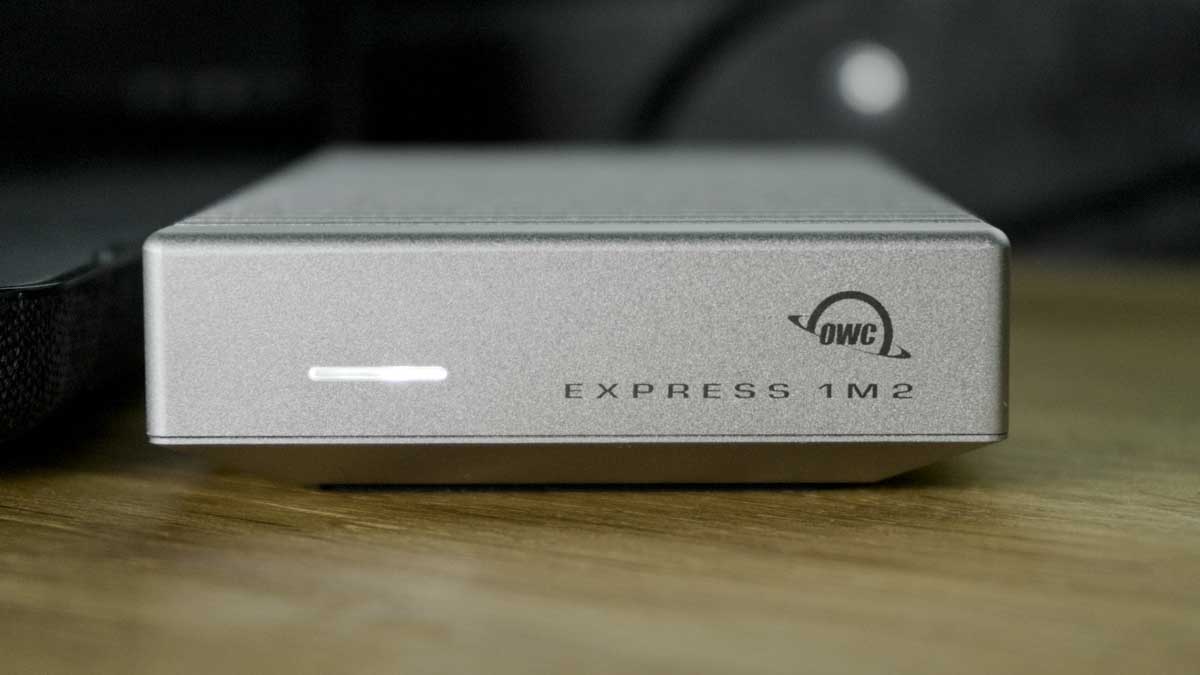
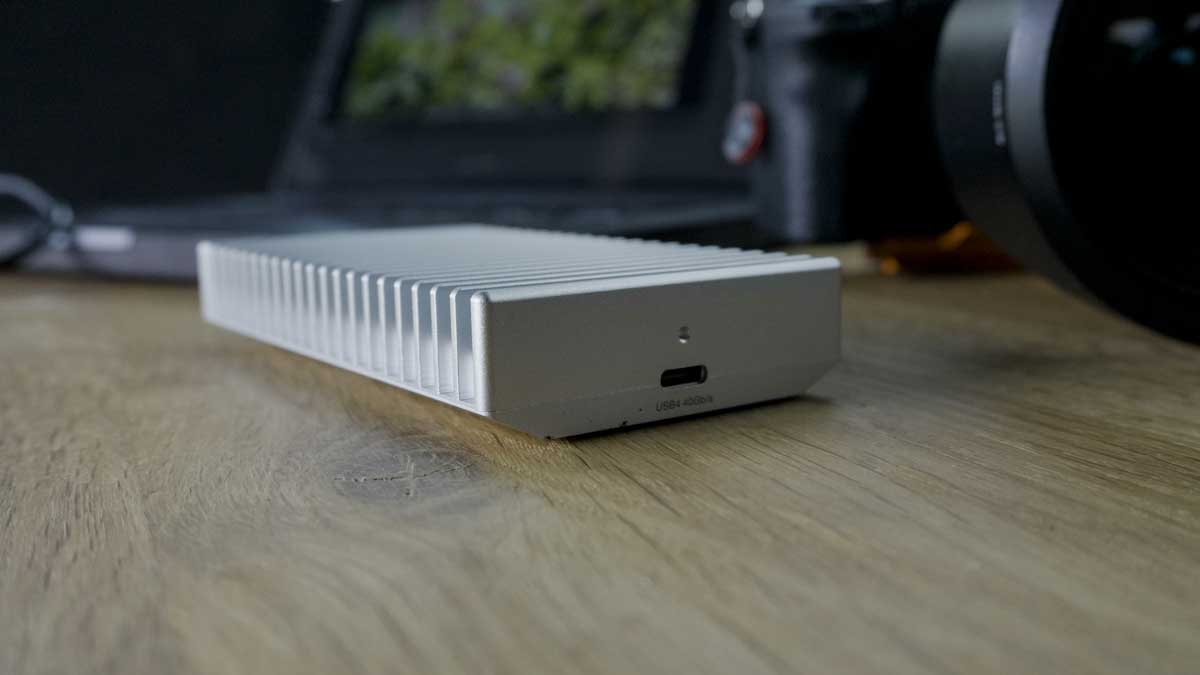
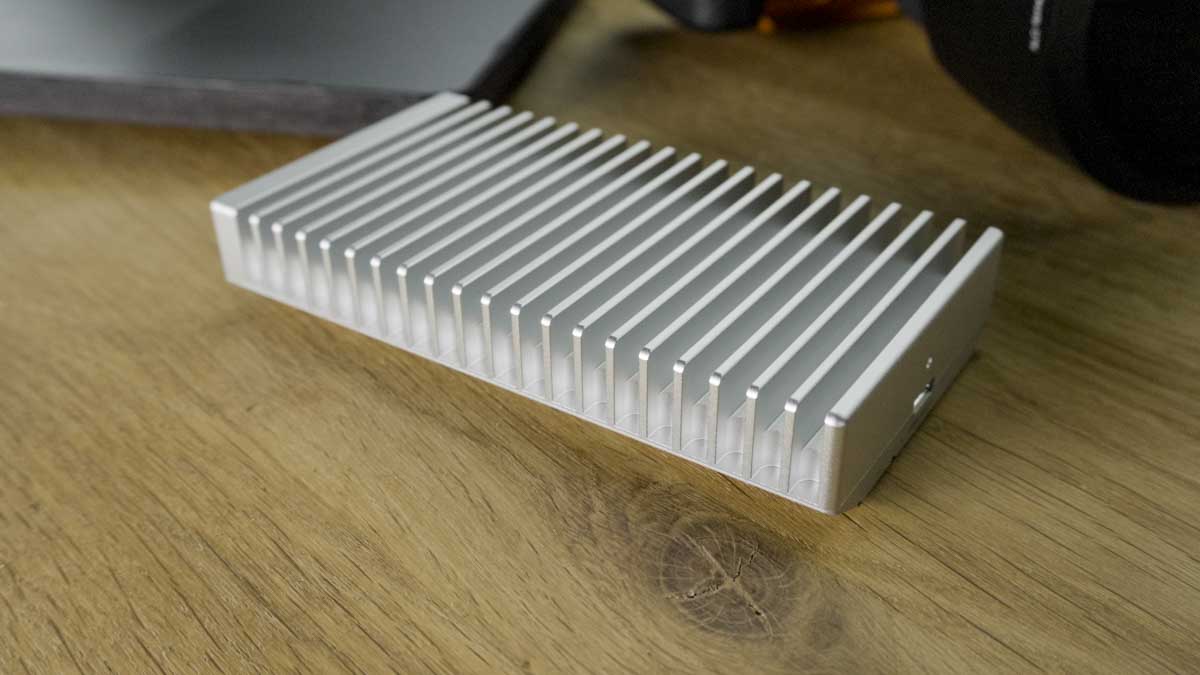
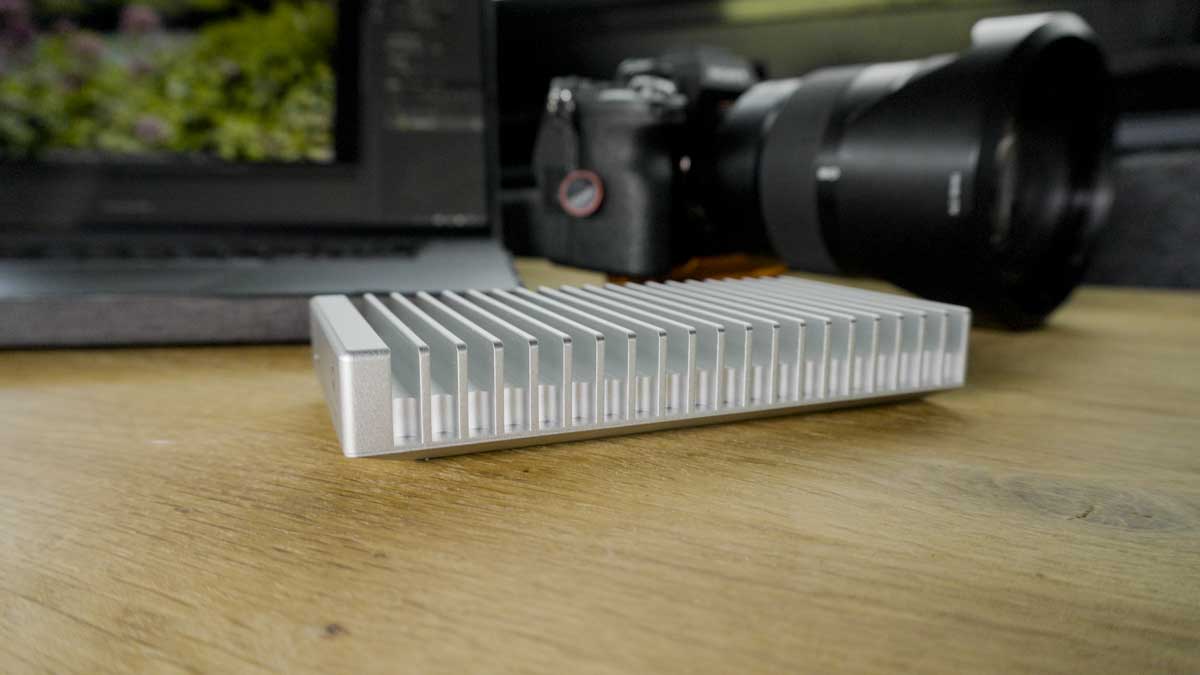
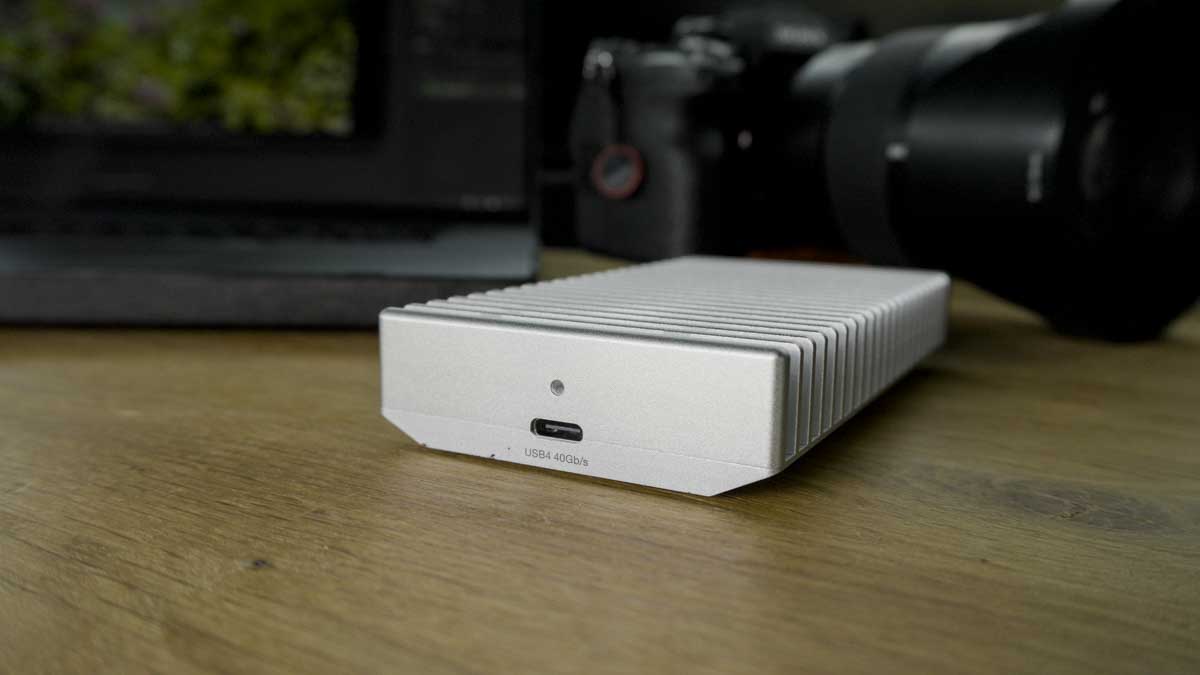
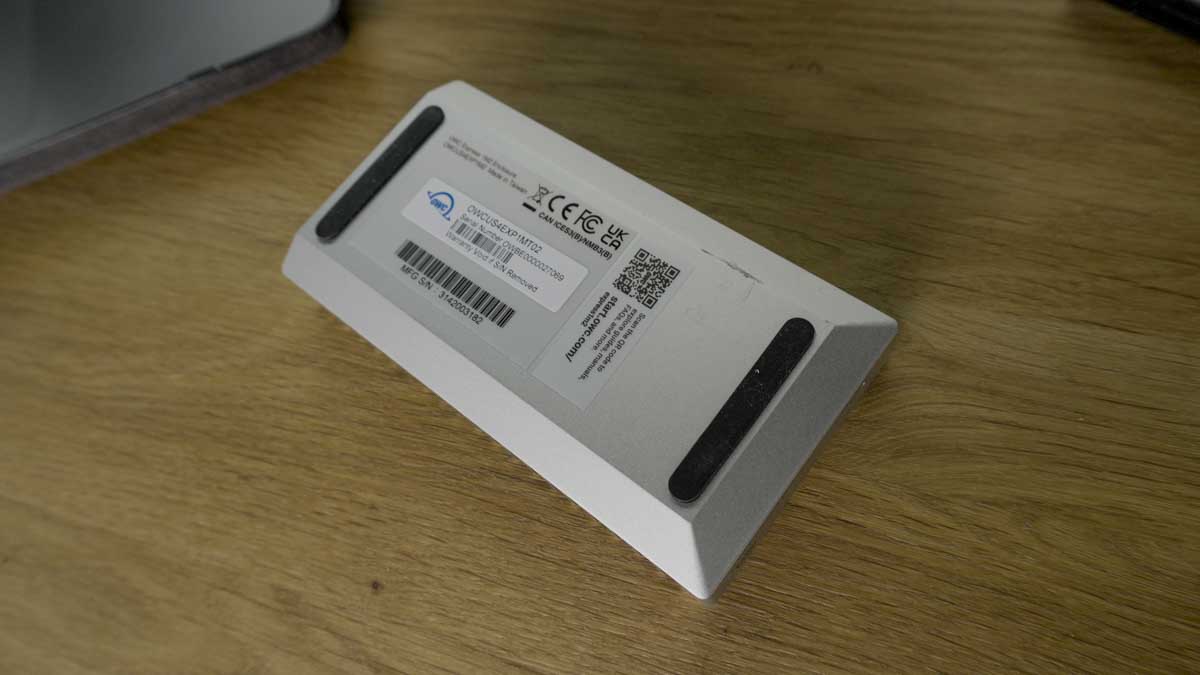
Reasons to buy
Reasons to avoid
If you're looking for speed, our pick for Mac users goes to the OWC Express 1M2, which is tailor-made for content creators and anyone sending and storing large files.
This device is unique in the field of best external hard drives for many reasons and the design itself is very interesting. Featuring an aluminium outer casing means the drive is effectively one large heat sink, letting you use it for long periods without much thermal throttling. There are also no fans, so the drive runs silently regardless of the load it's under.
We found the setup process to be extremely simple – just plug and play. The USB-C (40Gb/s) maintains high-speed transfers – ideal for 8K video files and RAW image files. However, it's still advisable to reformat the device on Mac the first time you use it.
While this is not the fastest external drive we've reviewed (check out our Adata SE920 external SSD review for that), it's an impressive Mac device that makes backup and transfer quick and seamless. We recorded read and write speeds of a stonking 3,000MB/s in our tests and would highly recommend this device for creative professionals.
Read our full OWC Express 1M2 review.
Best external hard drive for Mac on a budget
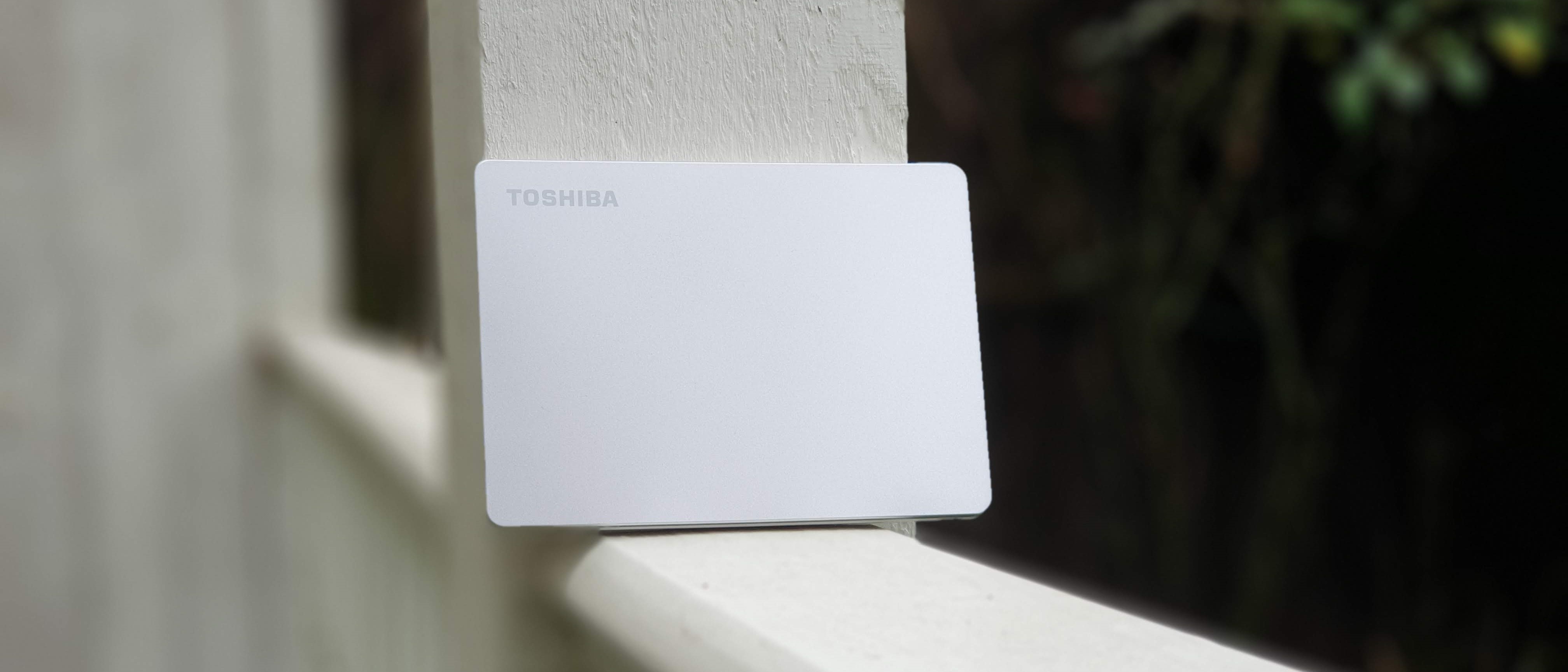
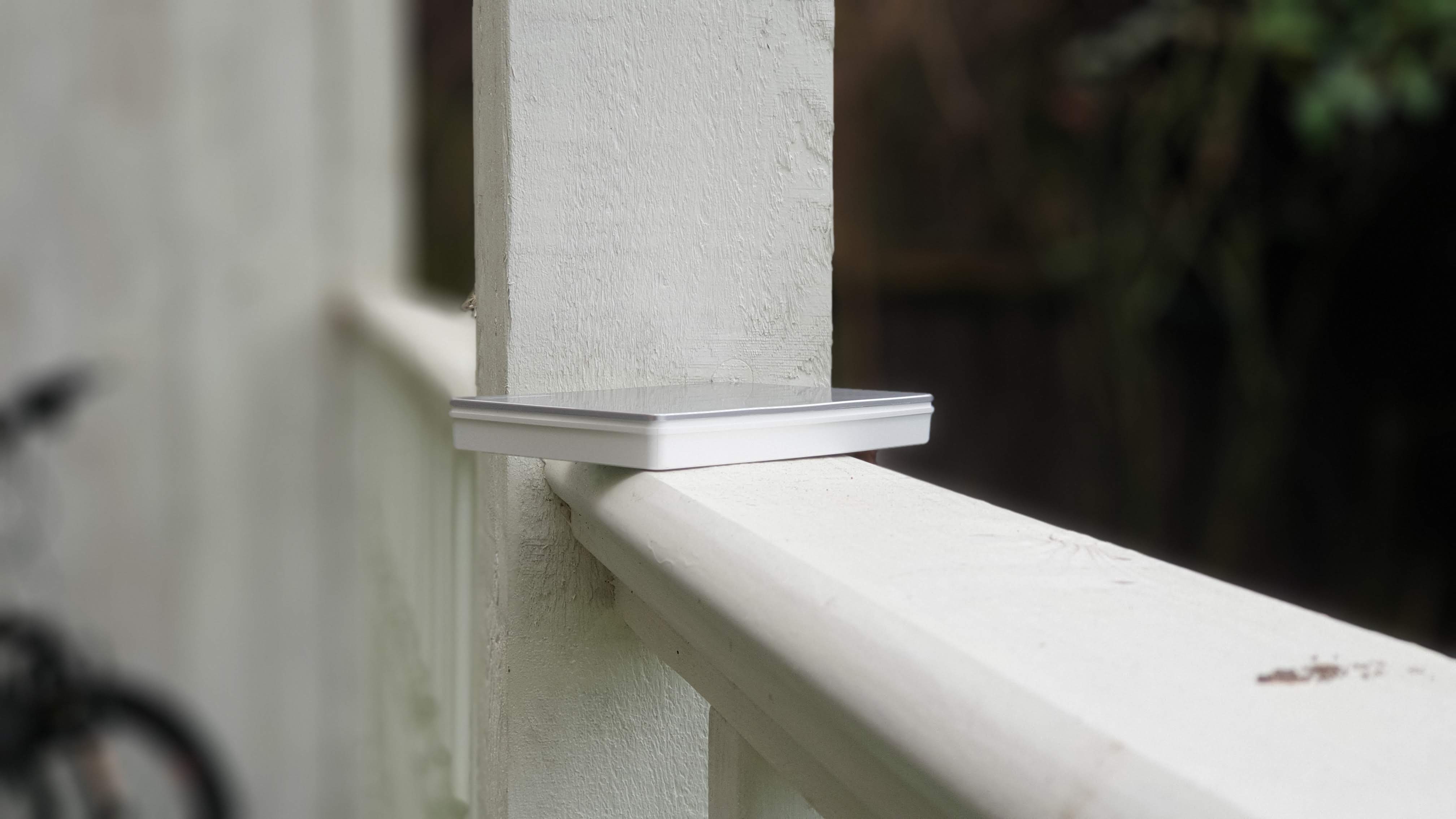
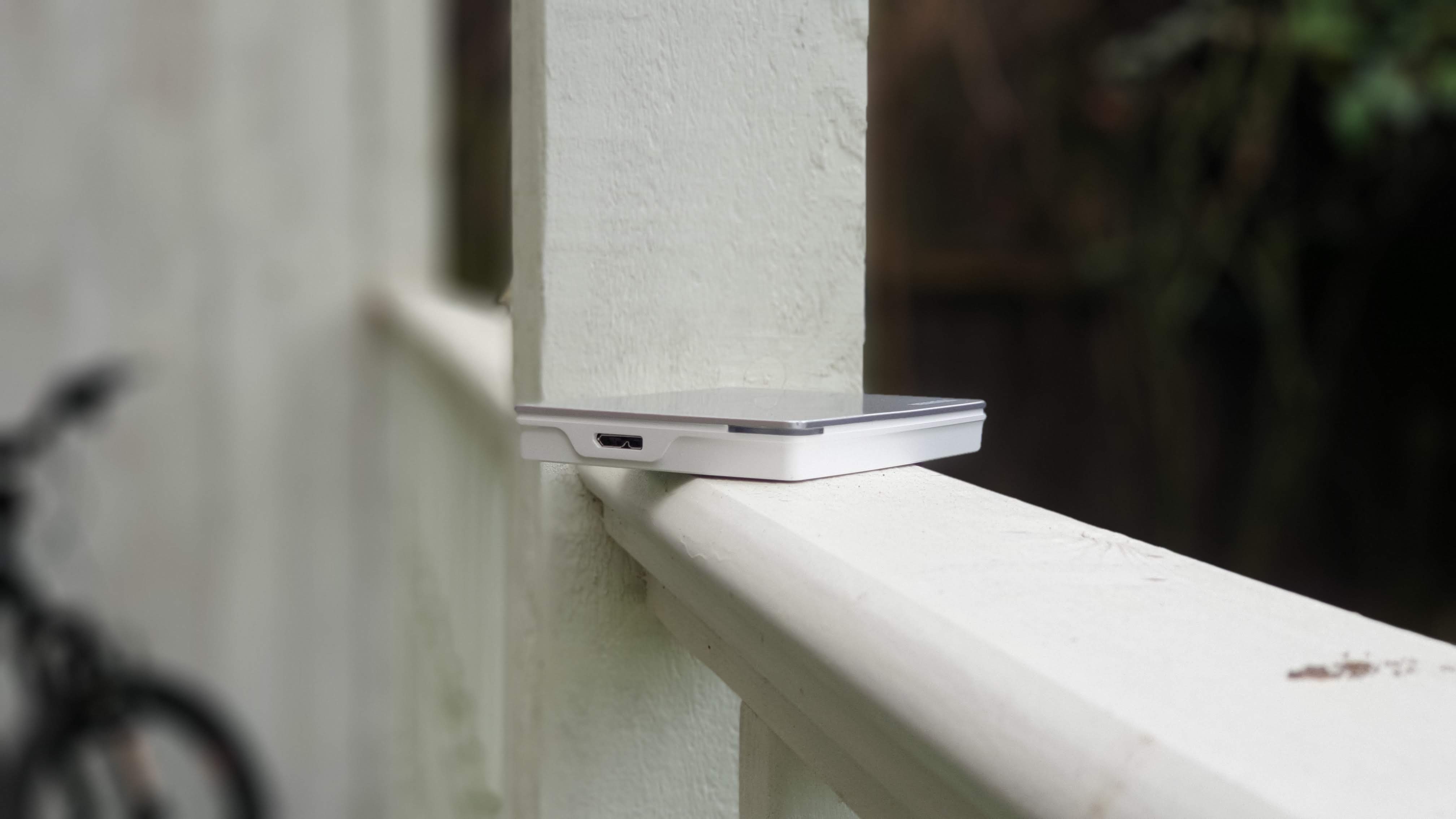
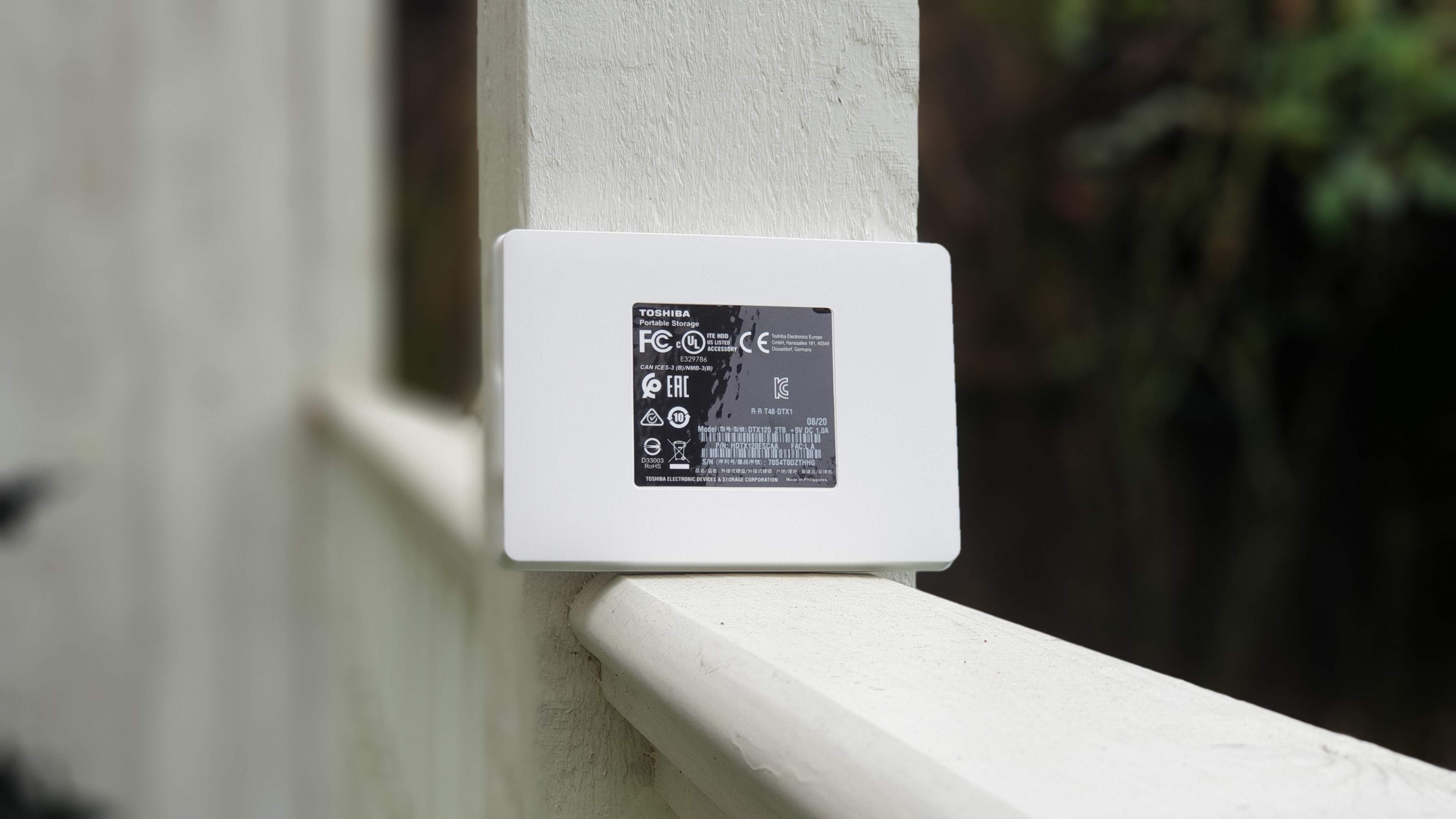
Specifications
Reasons to buy
Reasons to avoid
For one of the most affordable and reliable storage devices for Mac, look no further than the cheerful Toshiba Canvio Flex – with a minimalist white plastic casing and 2TB of HDD storage.
The Canvio Flex is categorized as specialty storage because it carries a long three-year warranty and comes with a Type-C cable, although puzzlingly, the device itself has a micro-B USB connector. We’d love to have seen Toshiba use a USB Type-C connector instead, but every cent counts at the lower end of the market, and aiming for that side of the market makes the Canvio Flex very affordable.
The drive itself doesn't come with many bells and whistles like some of its counterparts, like backup software, but it performs just as well as you'd expect without breaking the bank. During our testing process, we benchmarked the drive and got some very good results. Using CrystalDiskMark, we clocked speeds of 145MBps (read) and 152MBps (write). On AJA, we recorded read speeds of 126MBps and write speeds of 123MBps. We transferred a 10GB file at an average transfer rate of 80MBps, making it one of the quickest external hard disk drives we've recorded.
It is reasonably compact (80 x 111 x 13.5mm) and light (149g) but its dimensions are constrained by the fact that it is, at its heart, a 2.5-inch hard disk drive.
Read our full Toshiba Canvio Flex review
Best rugged external hard drive for Mac
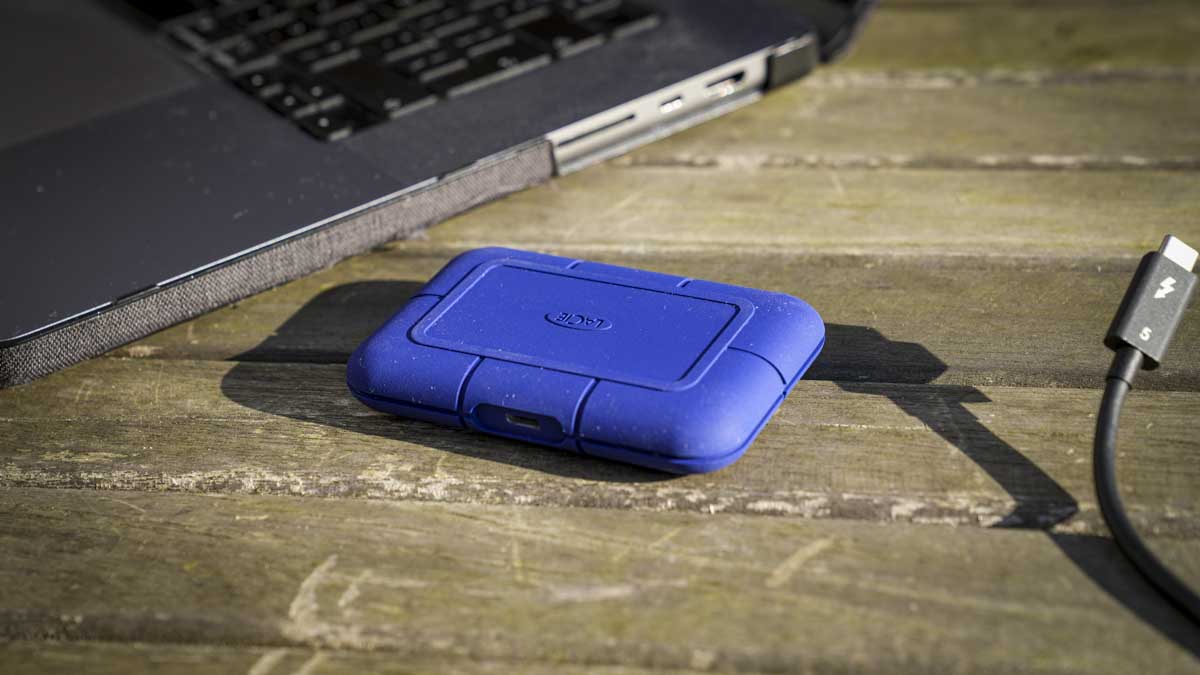
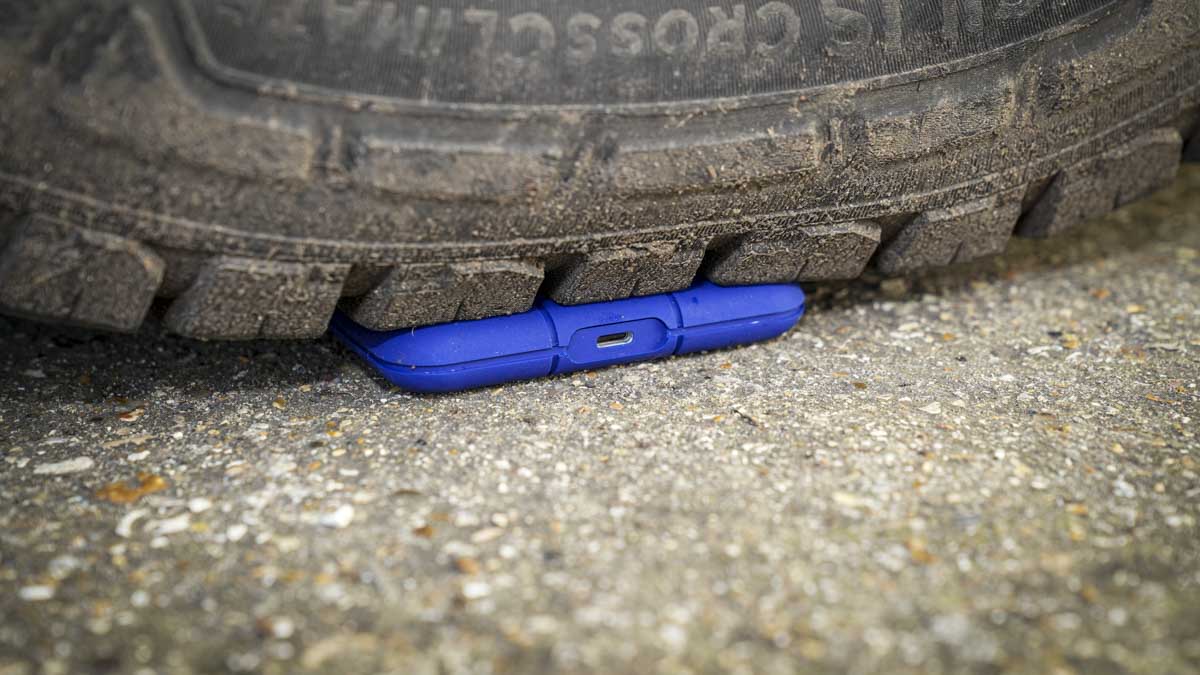

Specifications
Reasons to buy
Reasons to avoid
LaCie's Rugged drives have been an exceptional go-to for creatives in the past 20 years and are often at the forefront of innovation in the storage space. With the LaCie Rugged SSD Pro5, you can pick up one of the very fastest and most durable hard drives for Mac, with plenty of features, and an unbelievable performance, to boot.
The appearance is the most eye-catching aspect, with the LaCie Rugged SSD Pro5 adopting a new blue design instead of the distinct orange we've come to expect. The rubberized exterior is incredibly robust, and with IP68 protection, it's an improvement on the previous iteration's IP67 rating. Its dimensions are also more compact than they've ever been, thanks to the new technology, with the 150g drive measuring 17 x 65 x 98mm.
We wrote in our LaCie Rugged SSD Pro5 review that its performance instantly impressed, thanks to compatibility with Thunderbolt 5. Although we weren't able to test the full capabilities of the new standard, we still registered read speeds of a staggering 6,700MB/s and reads of 5,300MB/s. Thanks to the backward compatibility, you can also pair this SSD with previous standards and still enjoy the fastest speeds they allow.
Read our full LaCie Rugged SSD Pro5 review
Best compact external hard drive for Mac
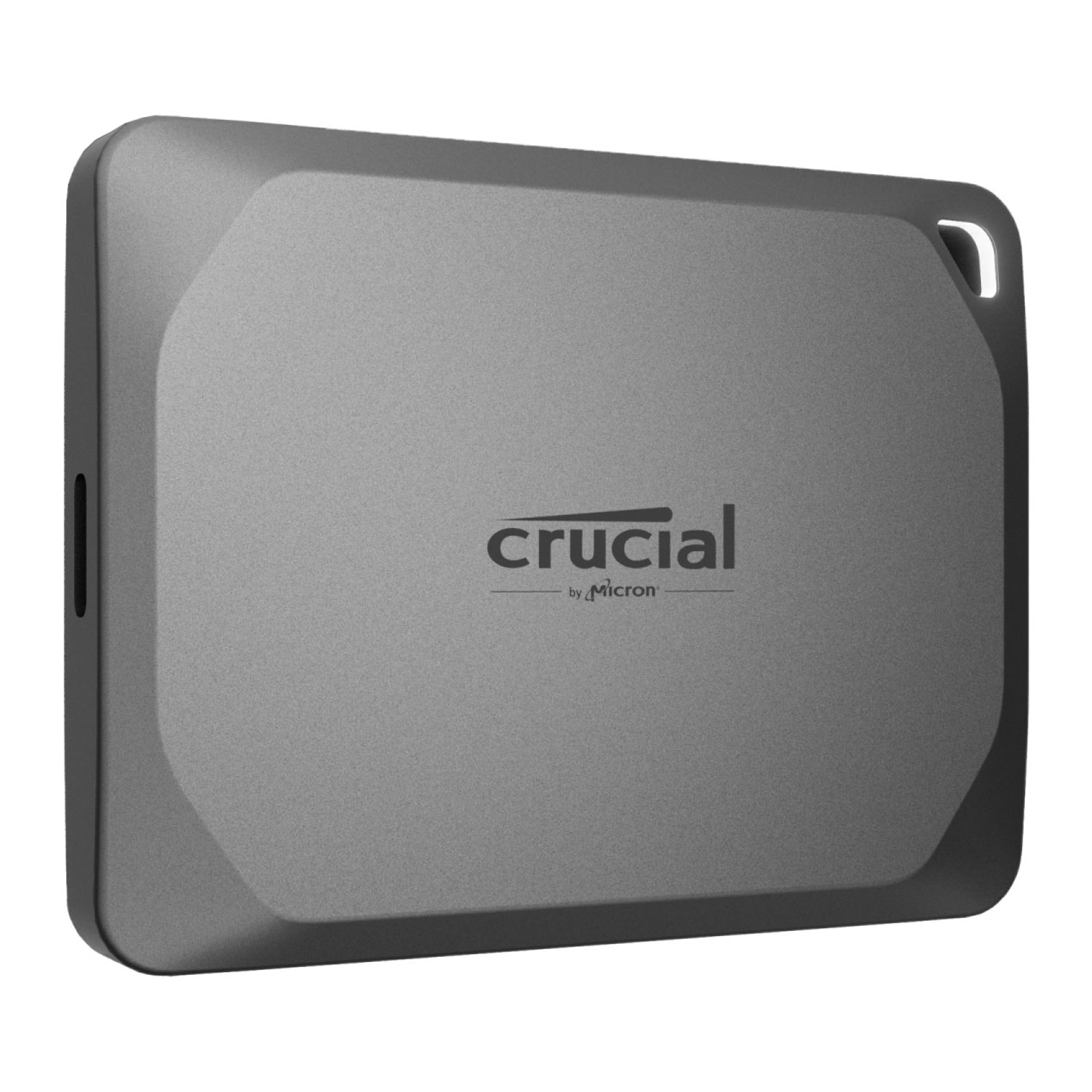
5. Crucial X9 Pro for Mac
Our expert review:
Specifications
Reasons to buy
Reasons to avoid
The Crucial X9 Pro for Mac is a portable marvel when you look at how little it weighs (38g) and its incredibly sleek dimensions of 65 x 50 x 5mm – making it small enough to fit in just about any bag or even your pocket. Better yet, it doesn't look or feel flimsy at all. It has an incredibly durable feel and is the perfect companion for an iMac or MacBook given its minimalist design.
This SSD supports USB 3.2 Gen 2 and supports great read and write speeds of up to 1,050MB/s, with an up-to 4TB capacity. The best part is that it's relatively affordable, with the 1TB version well under $100.
Although the X10 Pro SSD is now available, you are likely to get a great deal on the X9 Pro for Mac at this point in its life cycle. You do admittedly lose out on speeds of up to 2,000MB/s, but the X9 Pro for Mac has the added assurance of immediate and uncompromising compatibility. Ultimately, it's best for Apple MacBook or iMac users who want out-of-the-box compatibility with external storage to expand the space at their disposal without paying over the odds.
Best external Mac hard drive for capacity
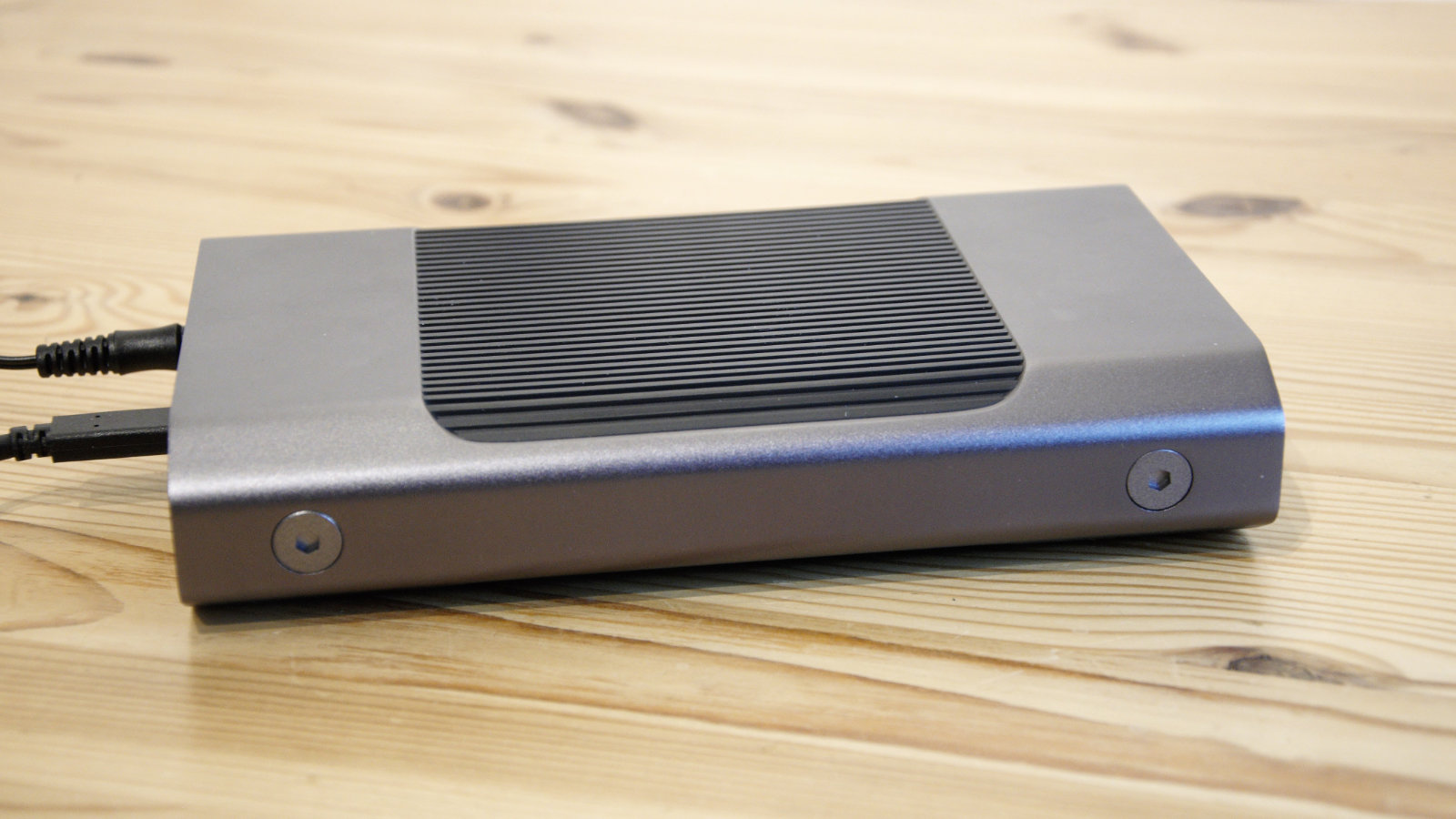
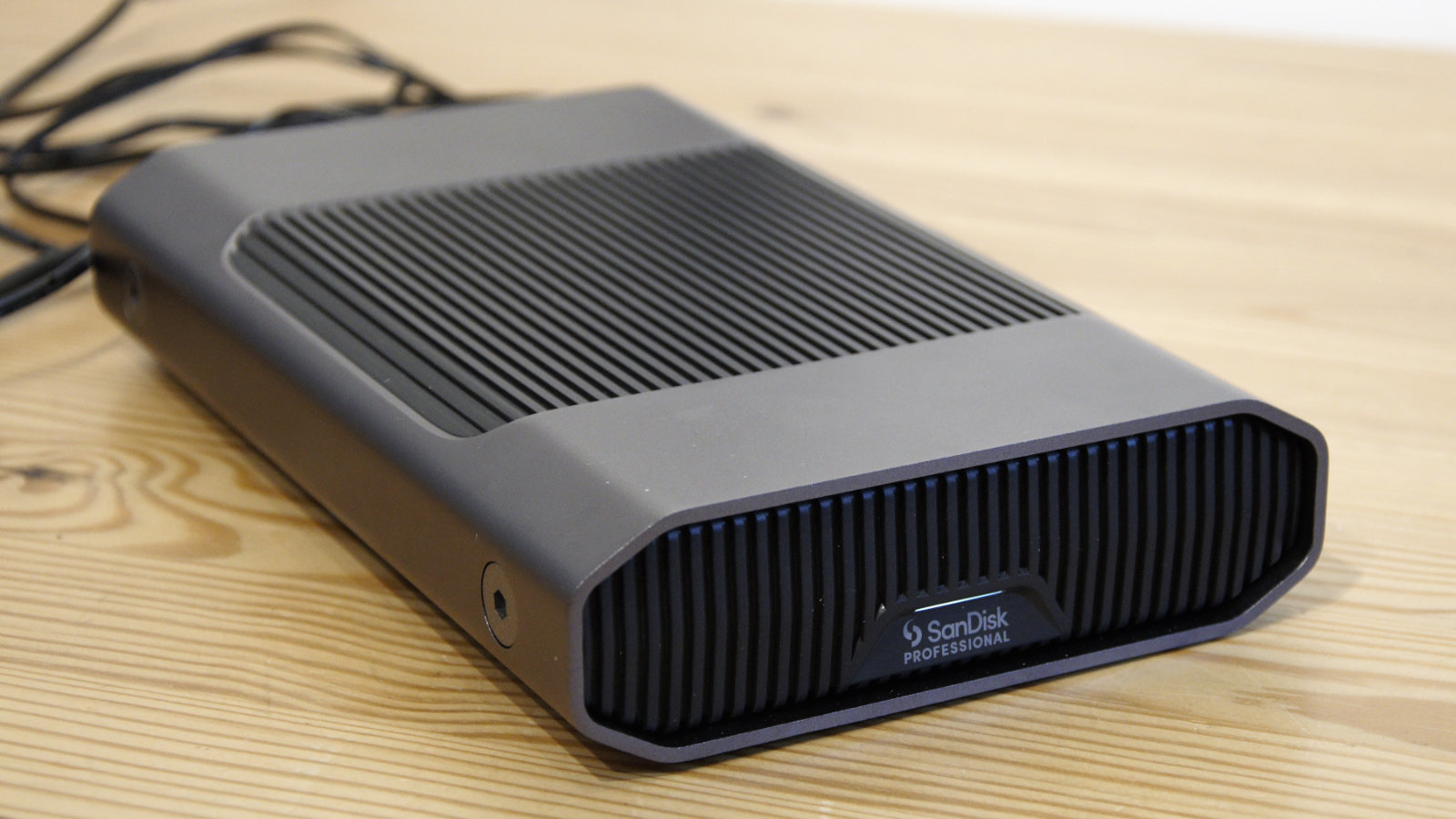
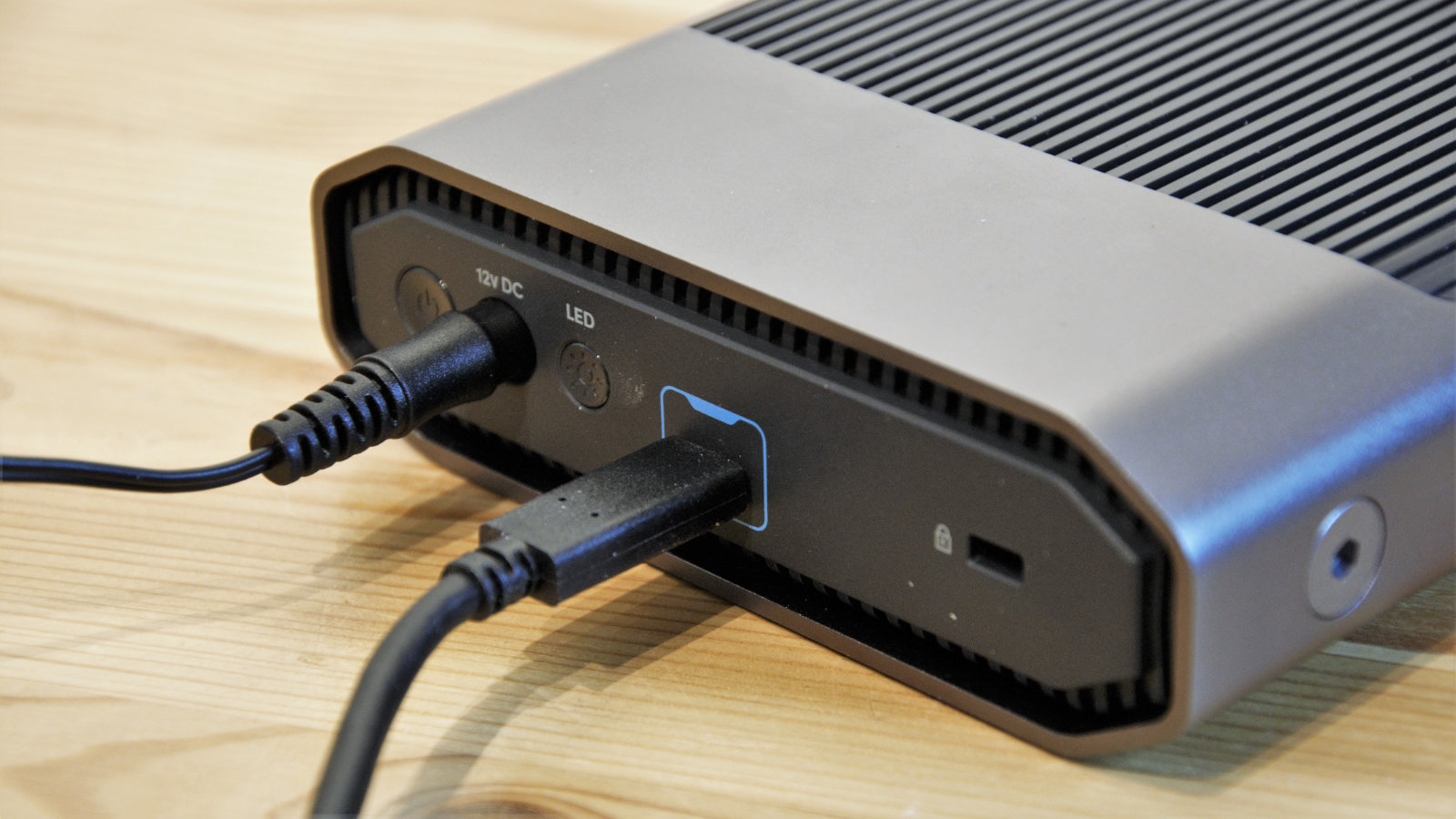
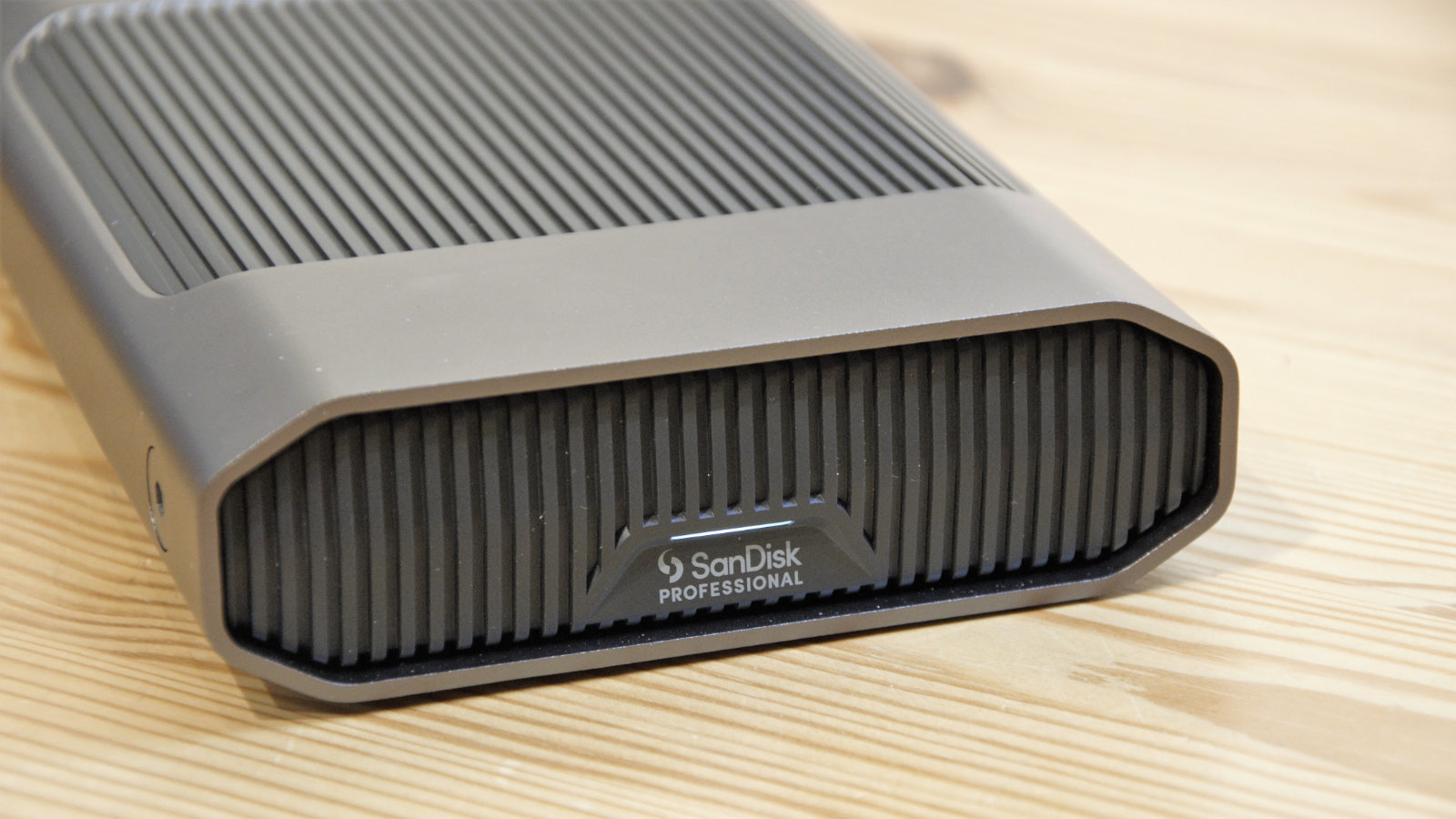
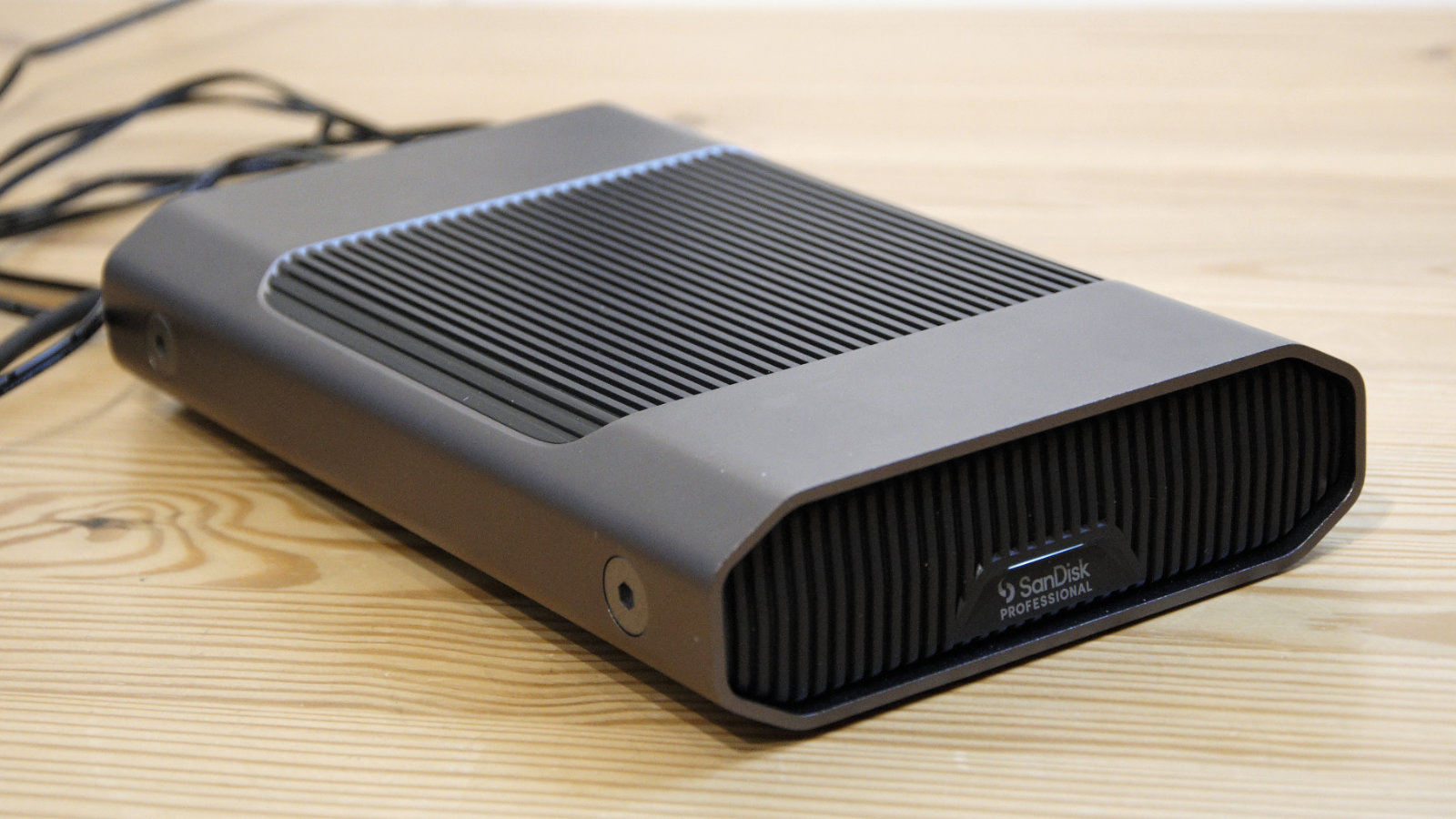
Specifications
Reasons to buy
Reasons to avoid
If you've got a desk setup and you're looking for a huge amount of storage capacity for your Mac, the SanDisk Professional G-Drive Desktop is built for the job. Engineered for professionals and enterprise users, and with capacities up to 22TB, it's ideal for fast transfer speeds, especially in a business or home office setting.
As an HDD, it's never going to be as quick as an SSD – especially the very newest ones, but in our own tests, we found it easily powered through tasks at lightning speed compared to lower-capacity external hard drives. We reviewed the 12TB model, which showed average read/write speeds of 250MB/s. While this might not sound anywhere close to the 3,000MB/s that the very latest drives can reach, it is ideal for short-term backup and storage if you don't need to regularly transfer files between devices routinely.
The two big selling points here are the quality of construction and the dramatic amount of capacity potentially on offer, going up to an impressive 22TB. It is, however, one of the more expensive ways to get extra space. This is, after all, a pricy unit. The benefit for Mac users, however, is that it comes pre-formatted for macOS compatibility, unlike the experience with Windows machines.
Read our full SanDisk Professional G-Drive Desktop review
Best external Mac hard drive for students
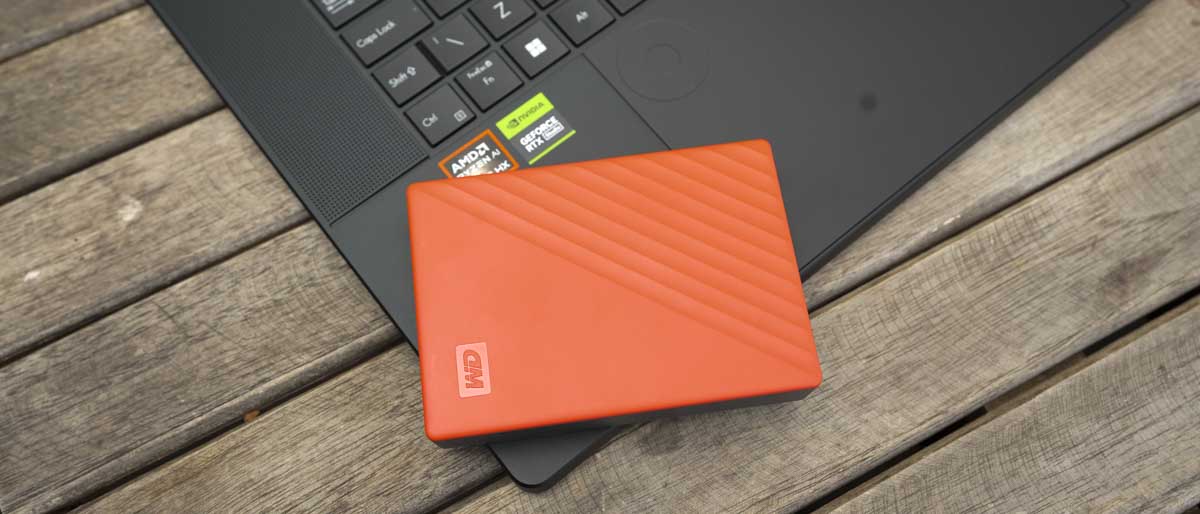
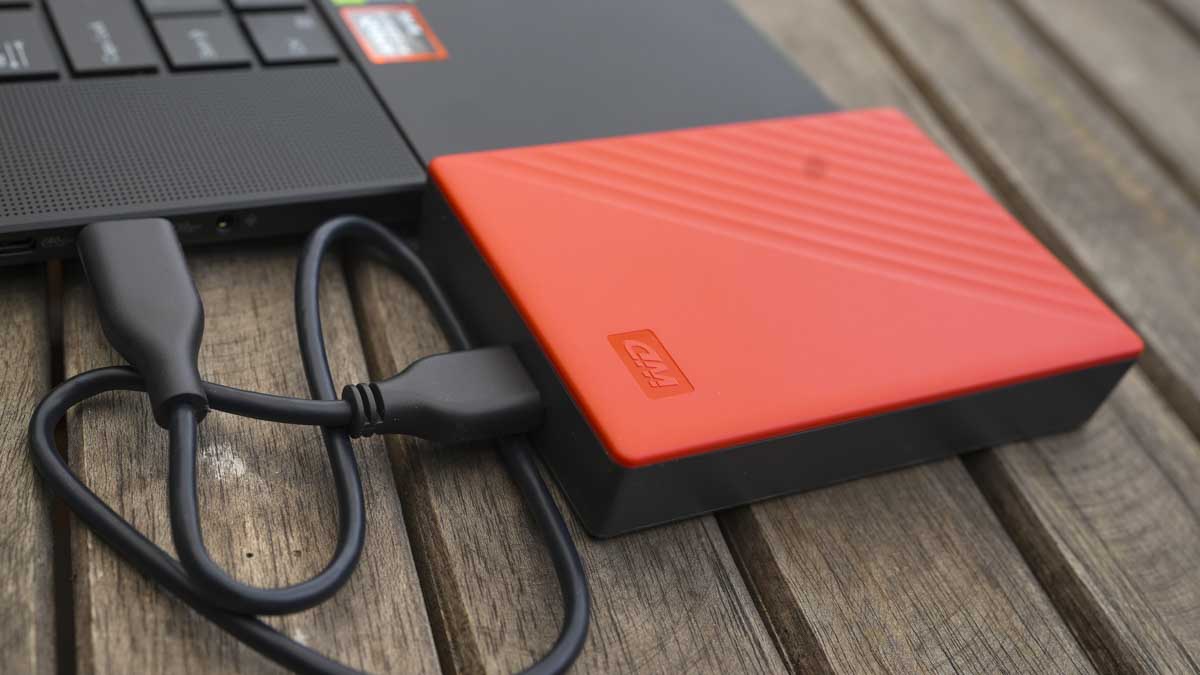
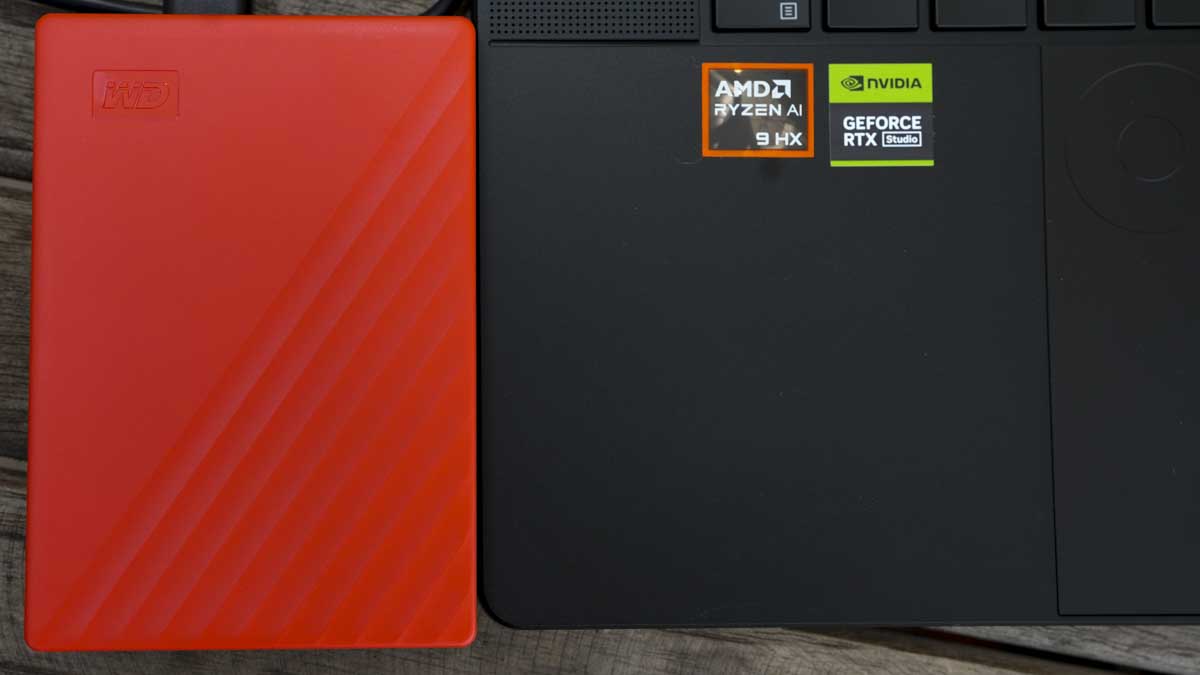
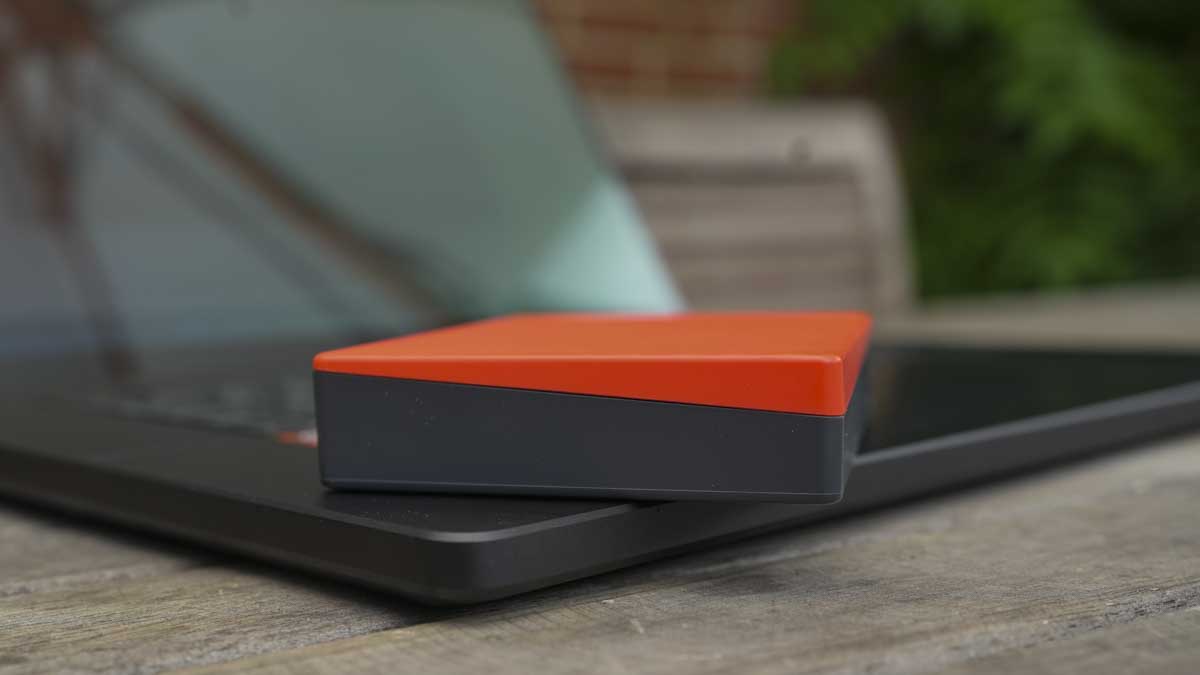
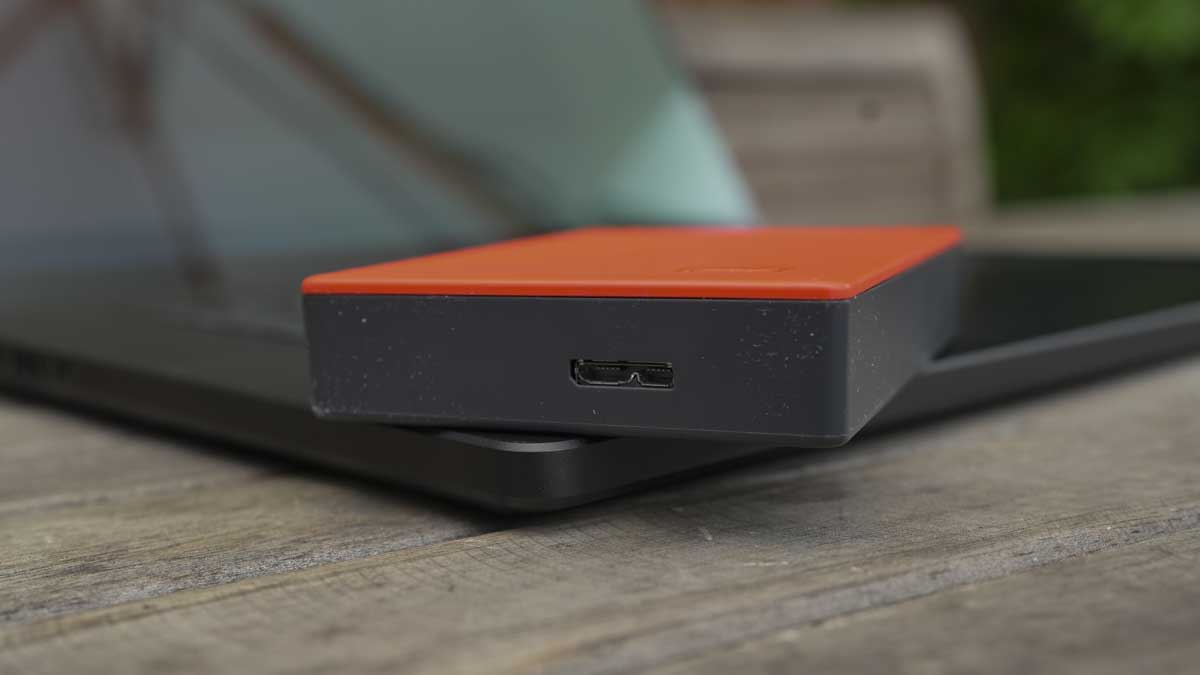
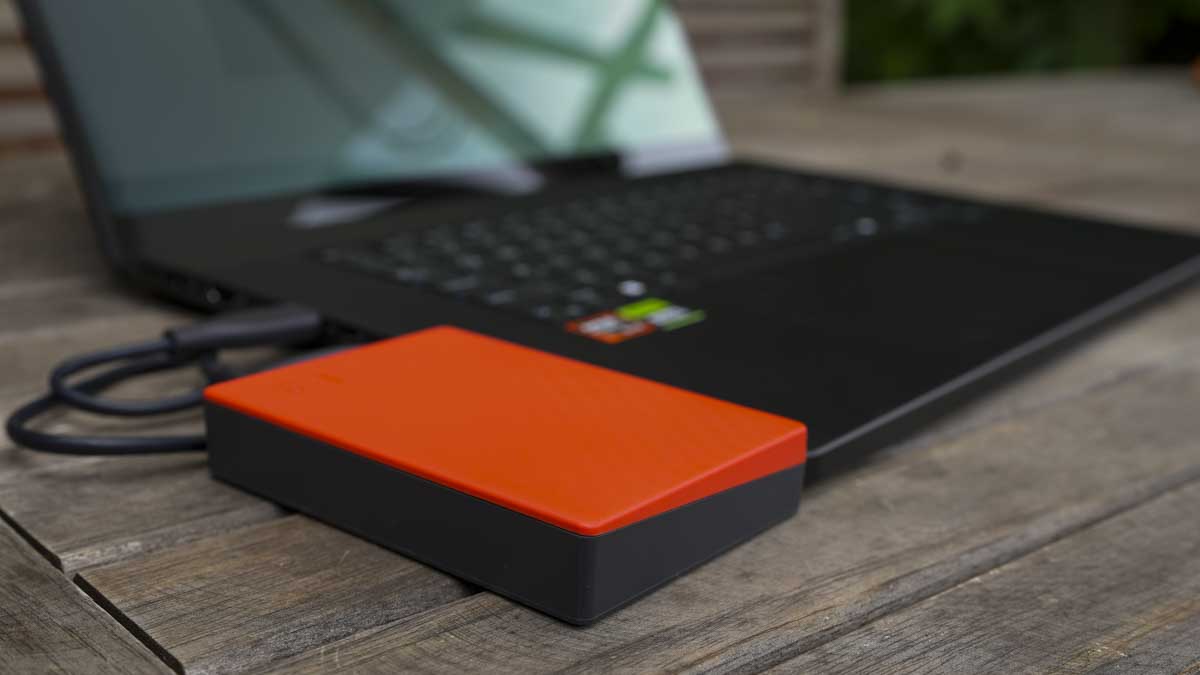
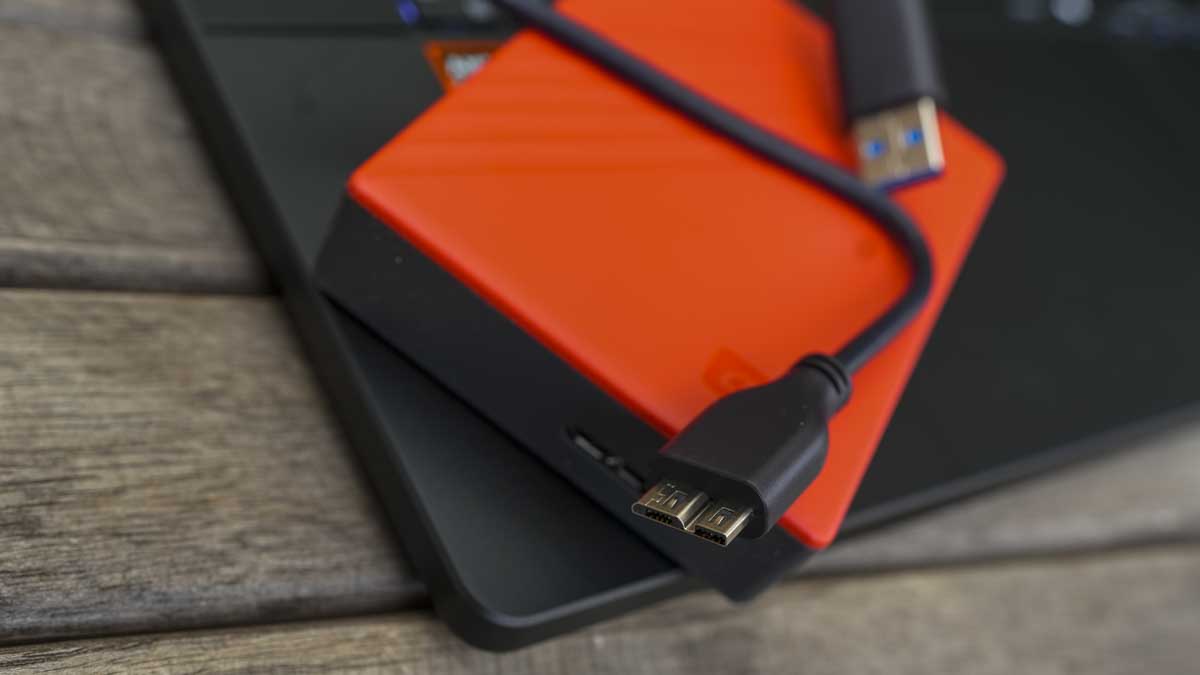
Specifications
Reasons to buy
Reasons to avoid
The WD My Passport is a good option for students looking for plenty of storage on a budget. This HDD read and write speeds are middling, but capacity ranges between 1TB and 6TB, and it comes in a huge range of colors.
We tested out the 6TB version and found a decent, compact Mac hard drive on offer here, recording average read/write speeds of around 111MB/s and 109MB/s. Couple that with the high storage capacity – ideal for lots of documents, images, and video files – at a reasonable price, and it's a pretty complete package.
This external drive also boasts 256-bit encryption and comes with the Acronis True Image security and backup software. During our review, we found the device required a small amount of setup before we could use it on an Apple device. If you're comfortable reformatting a drive (it's easy), then this won't be a deal-breaker. Once we'd performed the setup, this external drive ran perfectly on our Mac.
With fast speeds and great storage capacity, we reckon the WD My Passport HDD is perfect for sending and sharing a lot of data or large files. After getting past initial set-up, it's seamless, simple to use, and packs loads of welcome features and bundled software at a great price.
Read our full WD My Passport 6TB review
Best external hard drive for Mac: FAQs
Should I buy SSD or HDD for Mac?
When selecting an external hard drive for Mac or PC, your choice will depend on your budget and what you need a device for. SSDs traditionally have faster read and write speeds, so they're ideal for transferring files regularly, especially if they're large. But they’re generally far more expensive, and offer much less storage space than similarly priced HDDs.
If money is an issue, HDDs are the better option as you can get huge storage – we’re talking multiple terabytes for the price of gigabytes on the SSD side of the aisle. The main drawback is they’re more fragile than SSDs since they have spinning platters of data inside them, rather than a total absence of moving parts. They are, however, a great option if you simply need a repository to back up your data – rather than actively write over it and copy files back and forth between your Mac and a storage device.
What is the difference between external and portable hard drives?
The main difference is how the drive gets its power. Portable drives get it from the cable used to connect them to your Mac, whereas external ones usually get it from a separate power supply. This means an external drive is fine if you’re close to an electrical outlet, and a portable drive is better if you plan on accessing the data while on the go, i.e. they’re a great companion for laptops.
Will an external hard drive improve performance on Mac?
It will really depend on how you use it. For instance, if you offload the files contained on your Mac’s internal hard drive and place them on your new external drive, then the space you’ve freed up could be used by your operating system, potentially speeding up your Mac’s responsiveness in the process. If you just use it to create and add more files, albeit on a separate drive, then the difference in speed might only be negligible.
What HDD or SSD format is best for Mac?
There are plenty of drive formats out there, so things can get a little confusing. The main ones to bear in mind are Apple File System (APFS), Hierarchical File System (HFS), New Technology File System (NTFS) and Extensible File Allocation Table (exFAT).
APFS was introduced with macOS Sierra in 2017 and forced your device to completely upgrade to the new format – it was obviously divisive at the time, but it's an extremely powerful format for several reasons. Firstly, it was designed specifically for SSDs in the modern era, and now you can find the format across all Apple computing hardware. One key benefit is that duplicates of the same file on your SSD share the same data — making storage more efficient.
There are multiple of HFS, so things can get a little confusing here, but this is the default option when you format a hard drive on your Mac. The MacOS Extended (Journaled) format is the best format for working with a hard drive on a Mac – so long as you don't need a Windows machine to read the data at any point.
NTFS is the default format option for Windows users when formatting a hard drive and it's ideal for a purely Windows ecosystem, so we wouldn't recommend ever formatting a hard drive using NTFS if you plan on connecting it with a Mac. You will inevitably get an error message when you first connect it – however, you can still read the contents of the hard drive and copy them over to the Mac.
Finally, exFAT is compatible with both Windows and Mac – so might be best for most users who need to access files on different systems. It also handles large files reasonably well, so it might be ideal if, say, you're a videographer who needs to access Windows and Mac devices separately. Be aware, though, that If the hard drive unplugs or goes offline while data is being written, it could lead to corruption and loss of your files.
How to choose the best external hard drives for Mac for you
When choosing the best external hard drive for your Mac, you must consider other things beyond storage capacity and price.
Chiefly, your choice comes depends on your needs, which are likely to be very specific and possibly even unique. Will this be, for instance, a drive used as an extension to your iMac, and you’re on a tight budget? In which case, you’ll likely be better off with an external HDD, something you can plug in to power, with plenty of storage space, for a reasonable amount of money.
If however, you’re more an on-the-go person, who likes to work with your MacBook wherever you find yourself, from a hotel room, to a coffee shop, or even at the beach, then a portable SSD would be the better option: these will be powered directly from your laptop, and no moving parts means they are much more sturdy. But they are much more expensive.
Finding one that’s affordable and has enough storage space – a minimum of 1TB is highly recommended – for your present and future needs is ideal, even if you have more than enough money to splurge for something expensive.
Another deciding factor, however, is the connection. Many external hard drives have USB 3.0 connections, but since even the best MacBook Pro and Mac accessories rely on the power and data transfer speed of USB-Cs, USB Type-C or Thunderbolt 3 or 4 connections are certainly favorable.
If you’re storing critical files, especially for work, consider getting one with more robust security features. There are other things, including a rugged build if you plan on taking it out in the field with you, while the portable SSDs are ideal if you plan to travel around with it. We also recommend pairing your device with the best cloud storage and best backup software for additional data security.
How we test the best external hard drives for Mac
Our team of reviewers have tested hundreds of storage solutions, including the fastest external SSDs, best hard drives, and best SSDs, we undertake the same stringent processes for each review.
Although choosing the right drive can be very subjective, there are some parameters which can be useful to help gauge and compare the various devices we review. The most obvious one is price, of course - we all love a good deal, and price per GB or TB is a good indication of that. But this only tells us part of the story.
As you’ve seen through this list, we often mention the disparity between HDD and SSD when it comes to that value, primarily because HDD are much cheaper (being an older technology, that makes sense), and SSD are more expensive, but much studier, as they have no moving parts.
So it’s a balance between price, sturdiness, size, whether or not you need to drive to be powered by your Mac, or have to be powered independently, and perhaps most importantly, how quickly your Mac can read and write to that drive, i.e., how fast it can access and create information. And that depends both on the speed of the drive, but also on the type of cable you use.
All the best MacBook Pro devices, MacBooks and desktop Macs (iMac, Mac Mini, Mac Pro) come with one or more Thunderbolt ports which are also compatible with USB Type-C. So we look not only at the versatility and general performance of the drives - across several benchmarks - but also their relevance to specific use cases, after-sales and warranty, and sheer value for money.
Get in touch
- Want to find out about commercial or marketing opportunities? Click here
- Out of date info, errors, complaints or broken links? Give us a nudge
- Got a suggestion for a product or service provider? Message us directly
- You've reached the end of the page. Jump back up to the top ^
Sign up to the TechRadar Pro newsletter to get all the top news, opinion, features and guidance your business needs to succeed!
Steve has been writing about technology since 2003. Starting with Digital Creative Arts, he's since added his tech expertise at titles such as iCreate, MacFormat, MacWorld, MacLife, and TechRadar. His focus is on the creative arts, like website builders, image manipulation, and filmmaking software, but he hasn’t shied away from more business-oriented software either. He uses many of the apps he writes about in his personal and professional life. Steve loves how computers have enabled everyone to delve into creative possibilities, and is always delighted to share his knowledge, expertise, and experience with readers.
